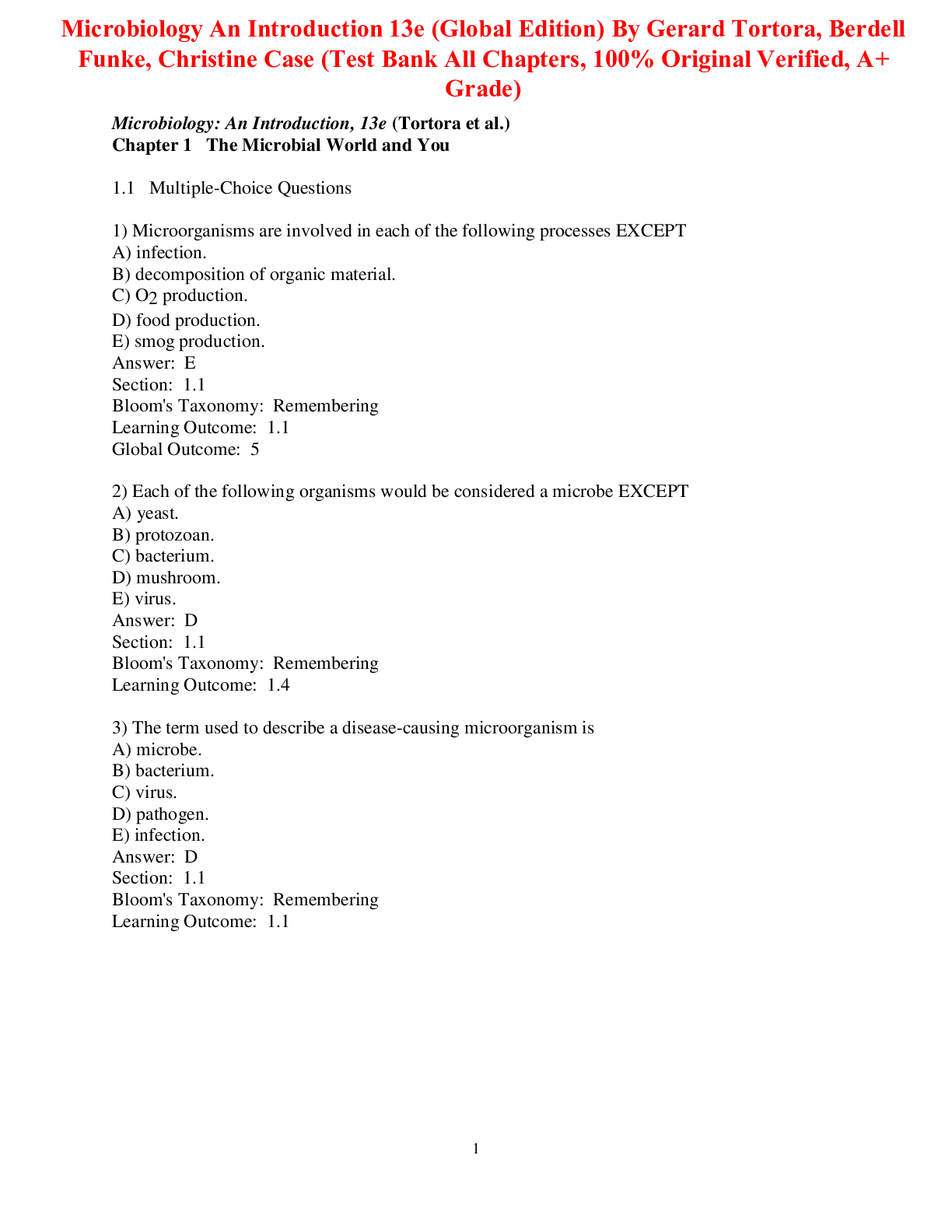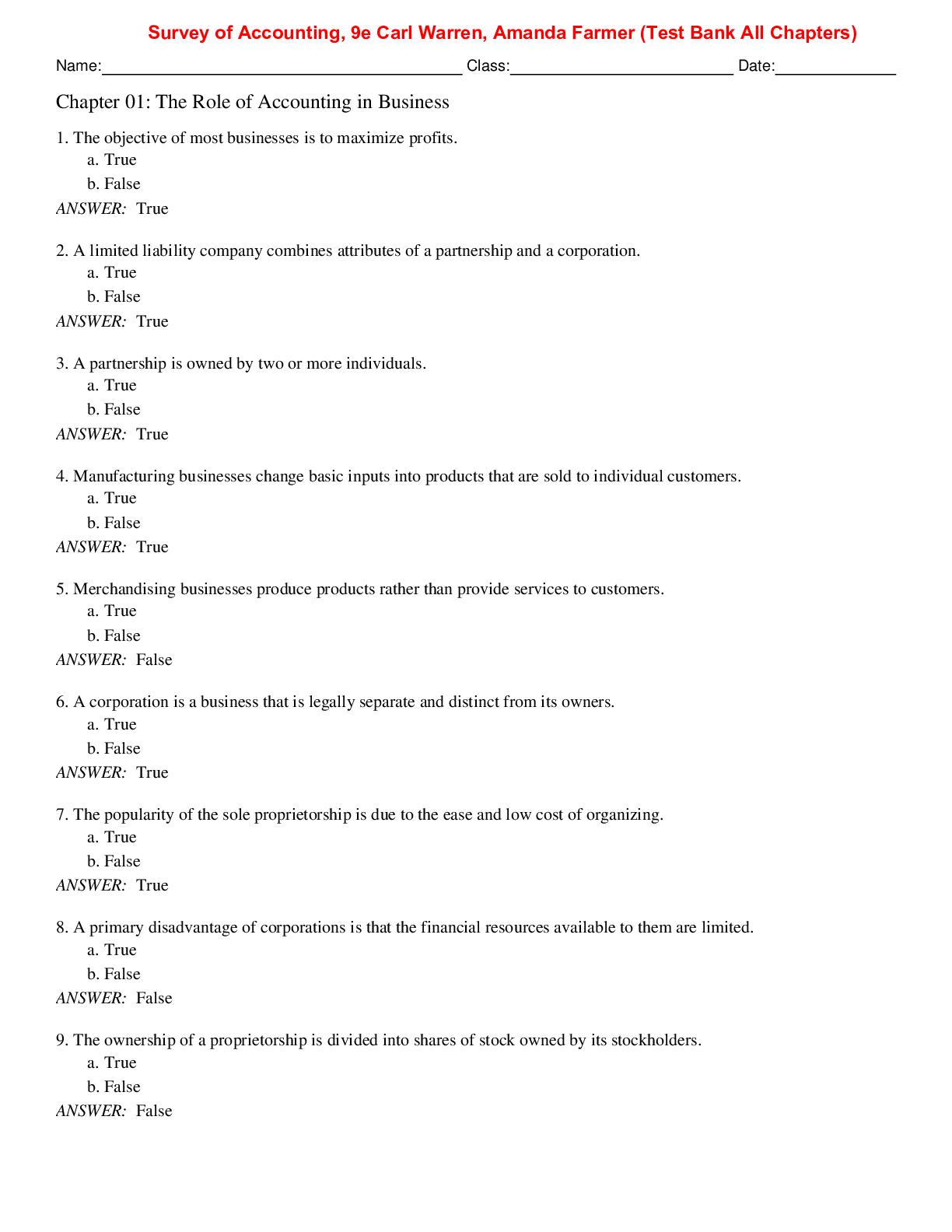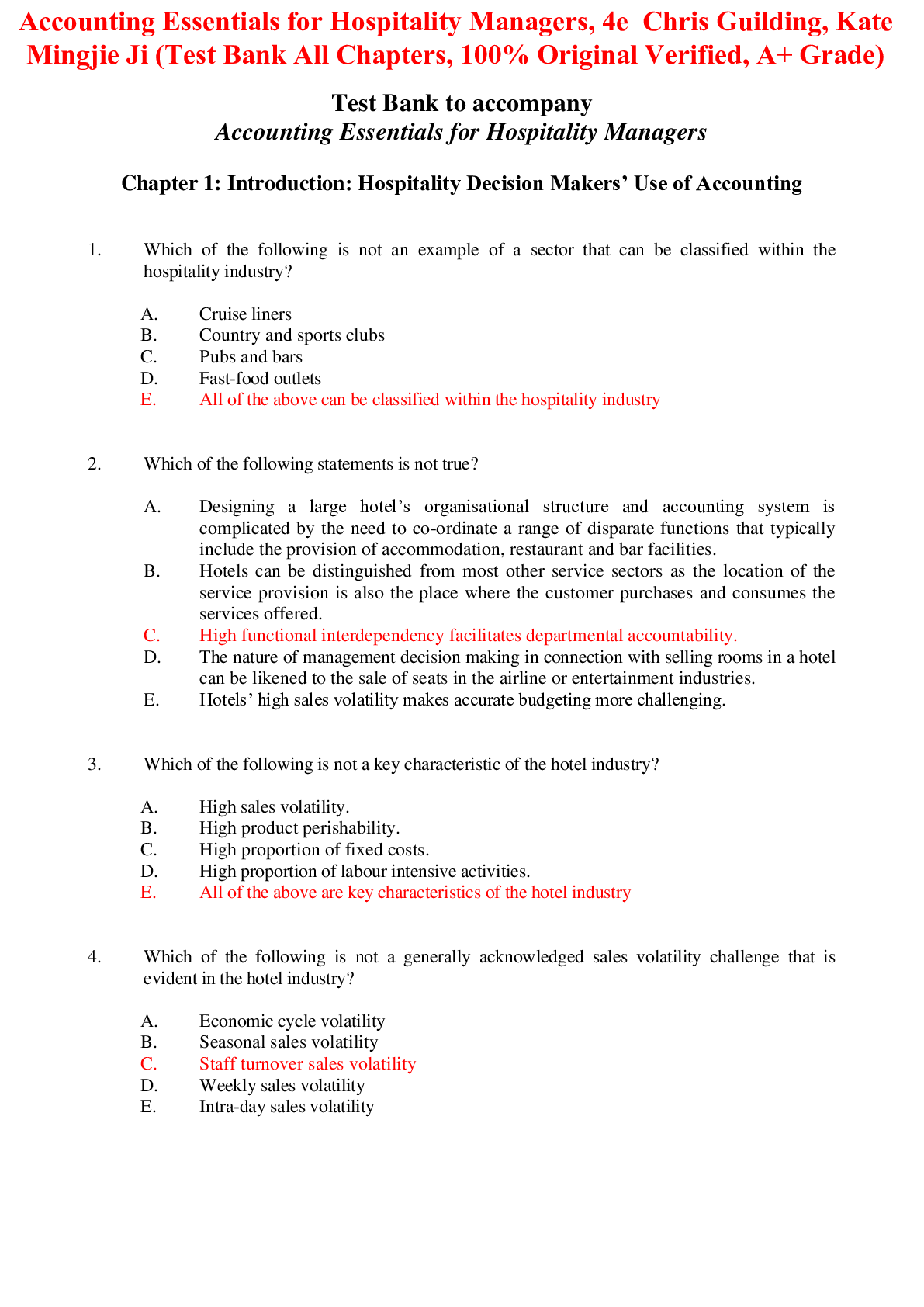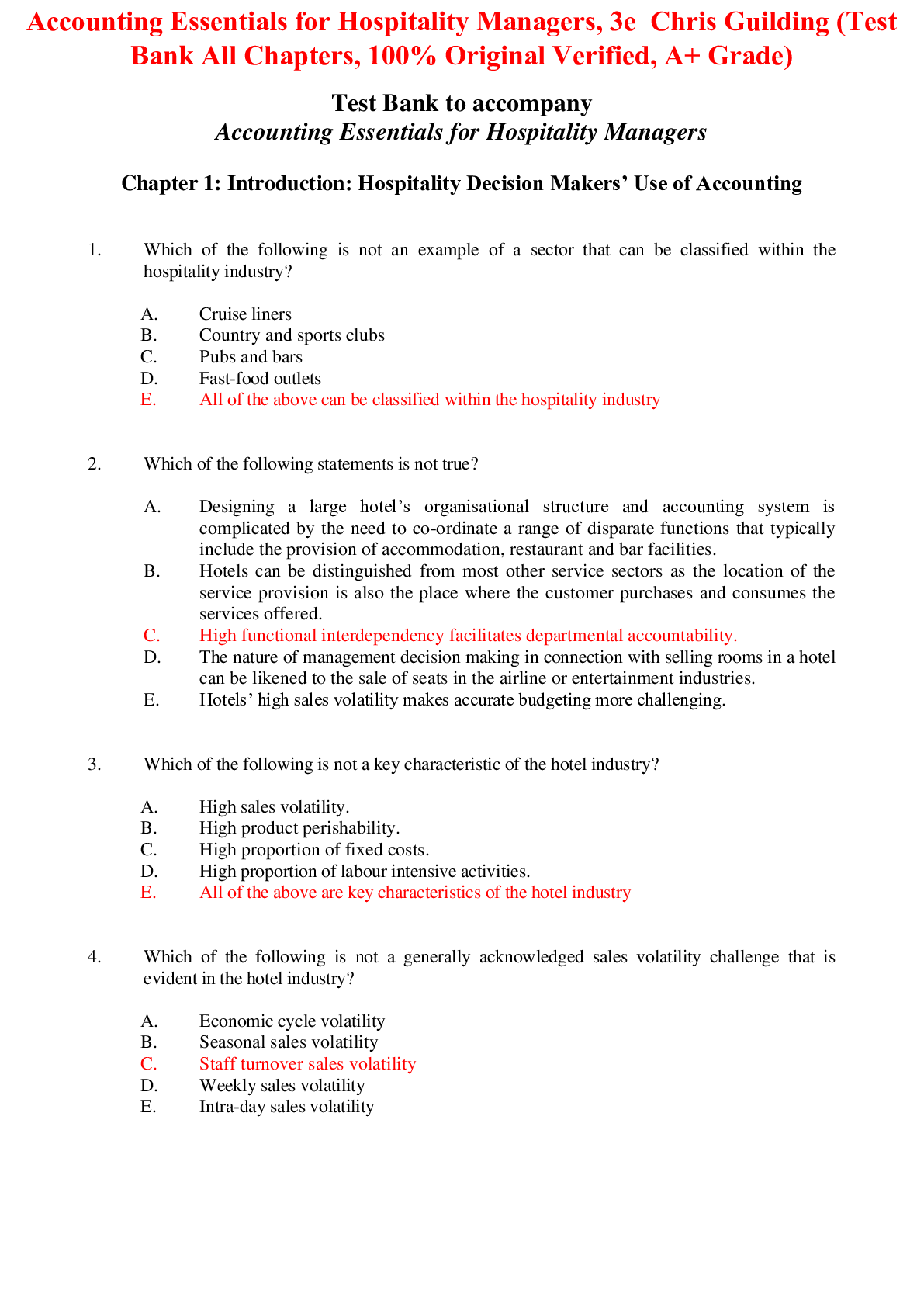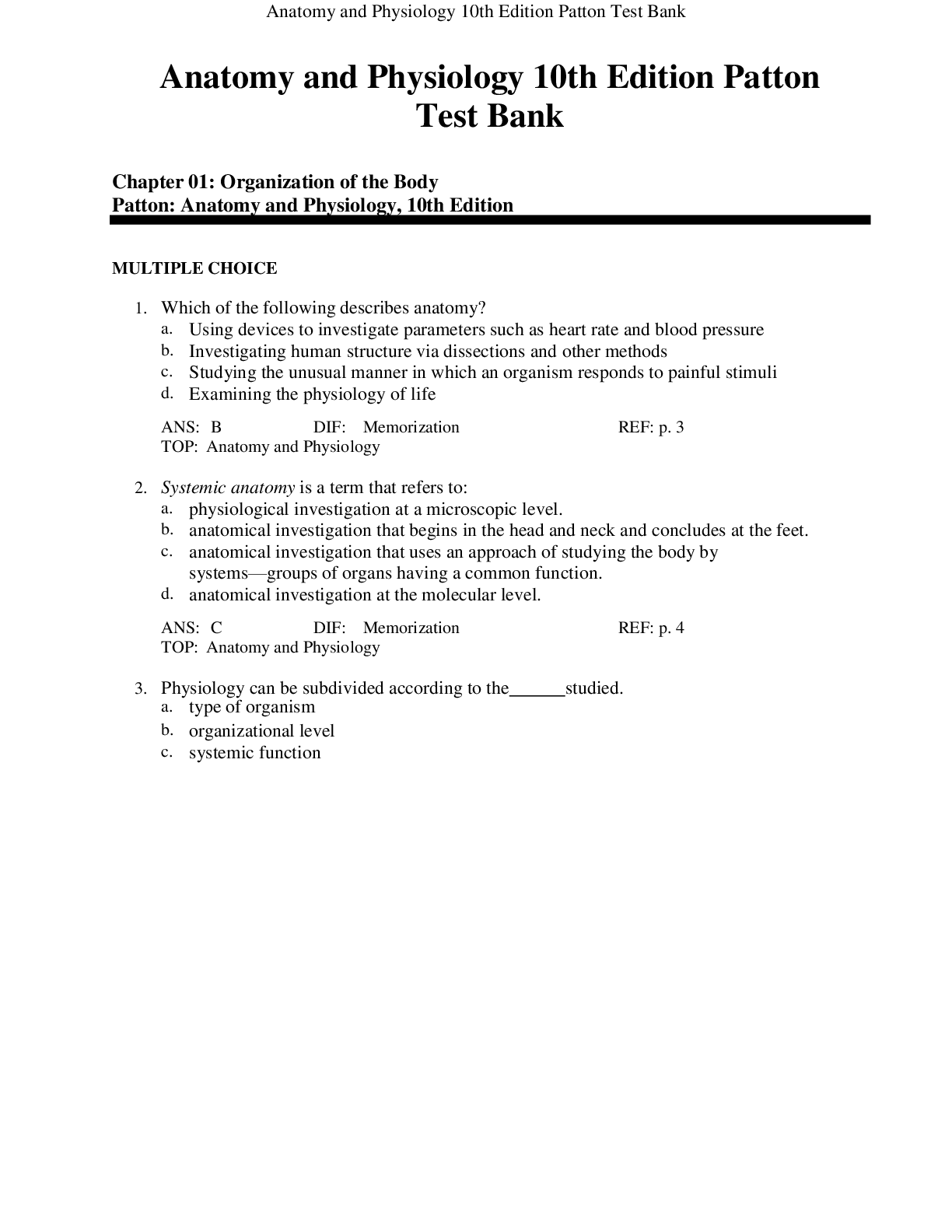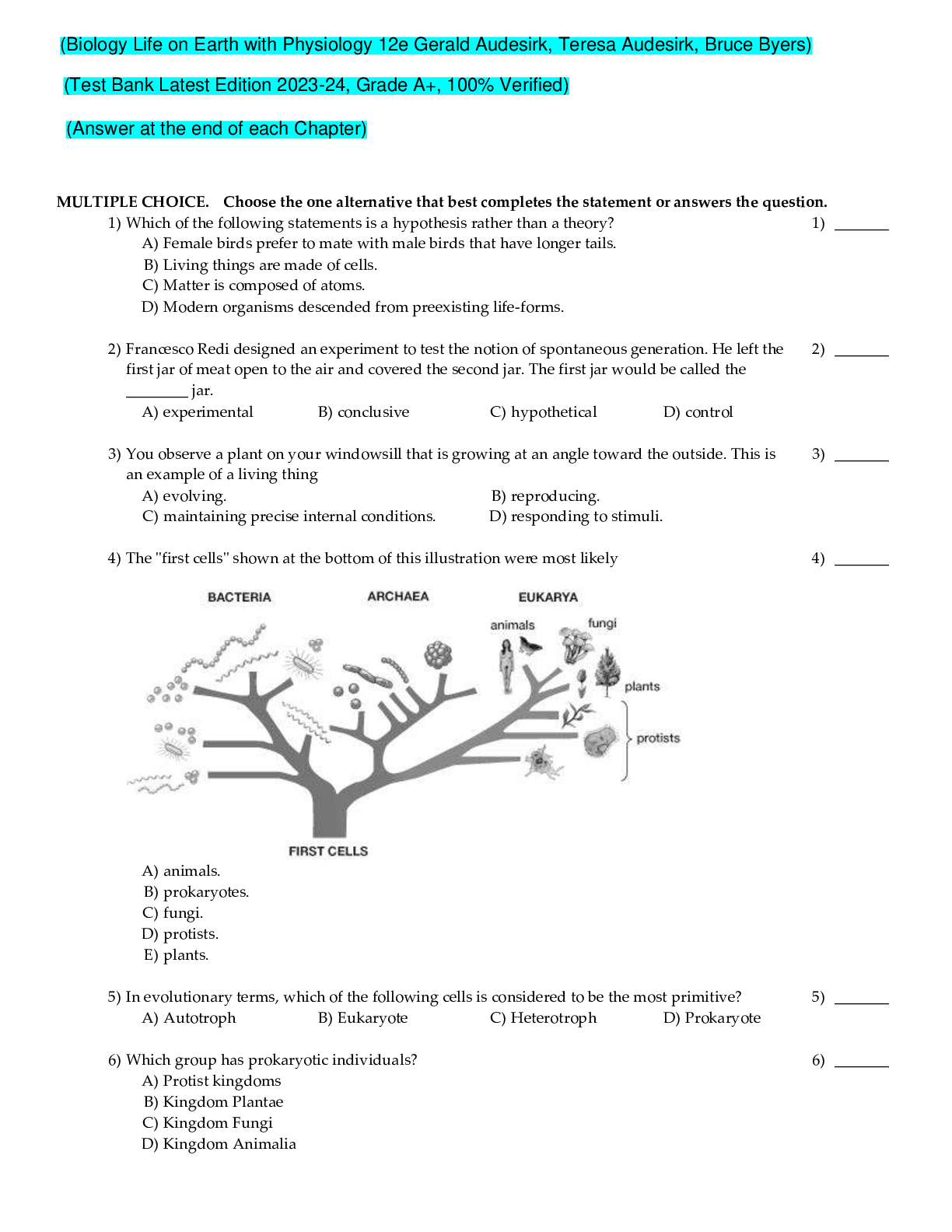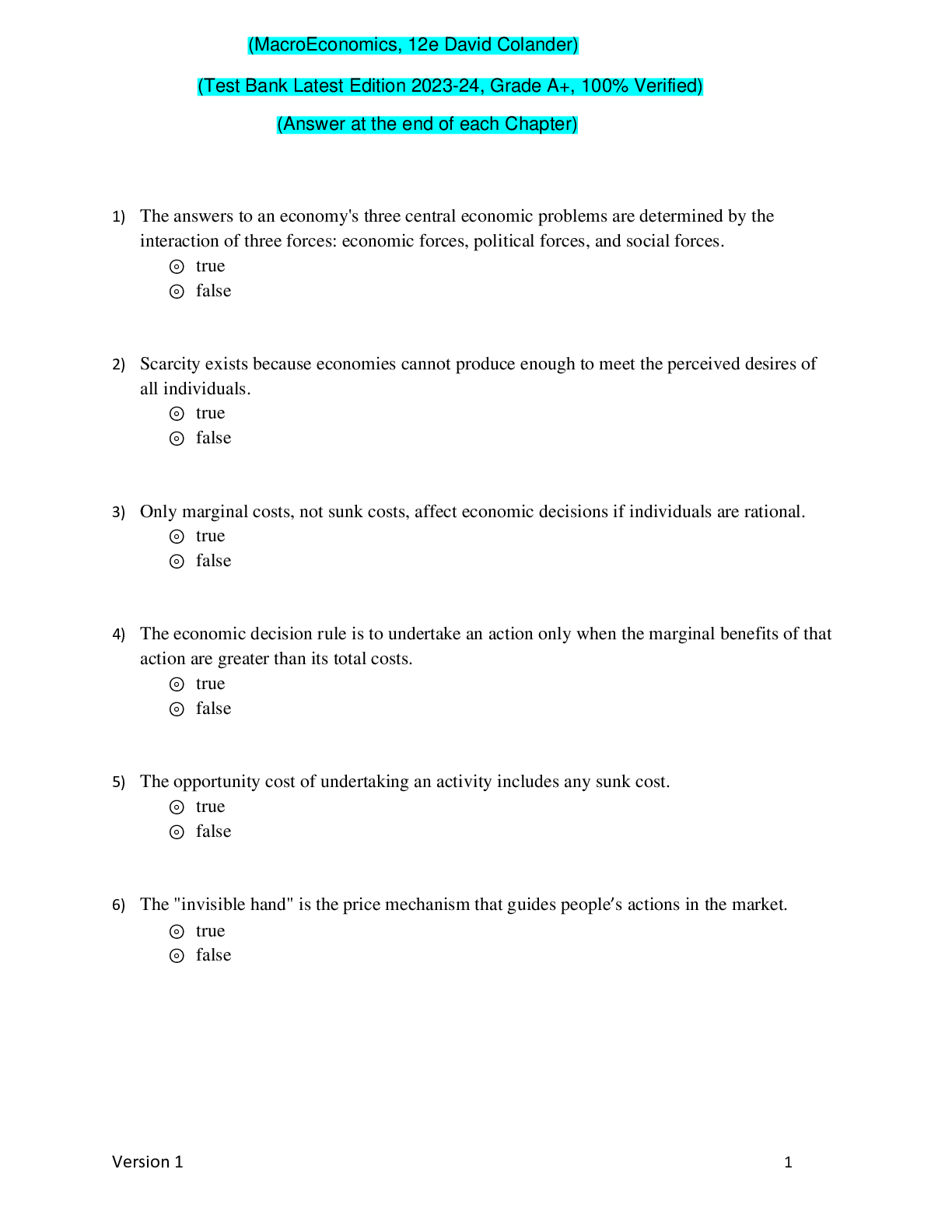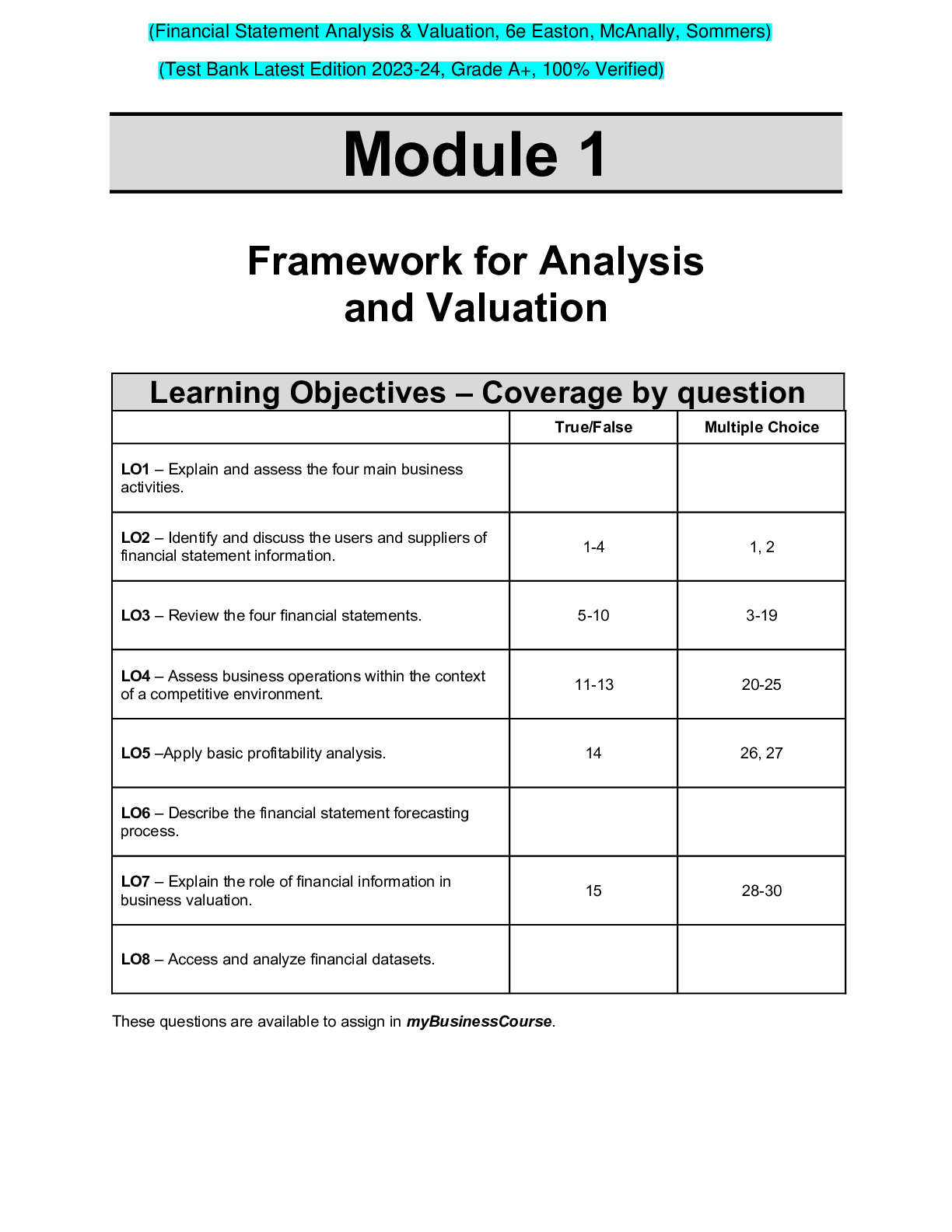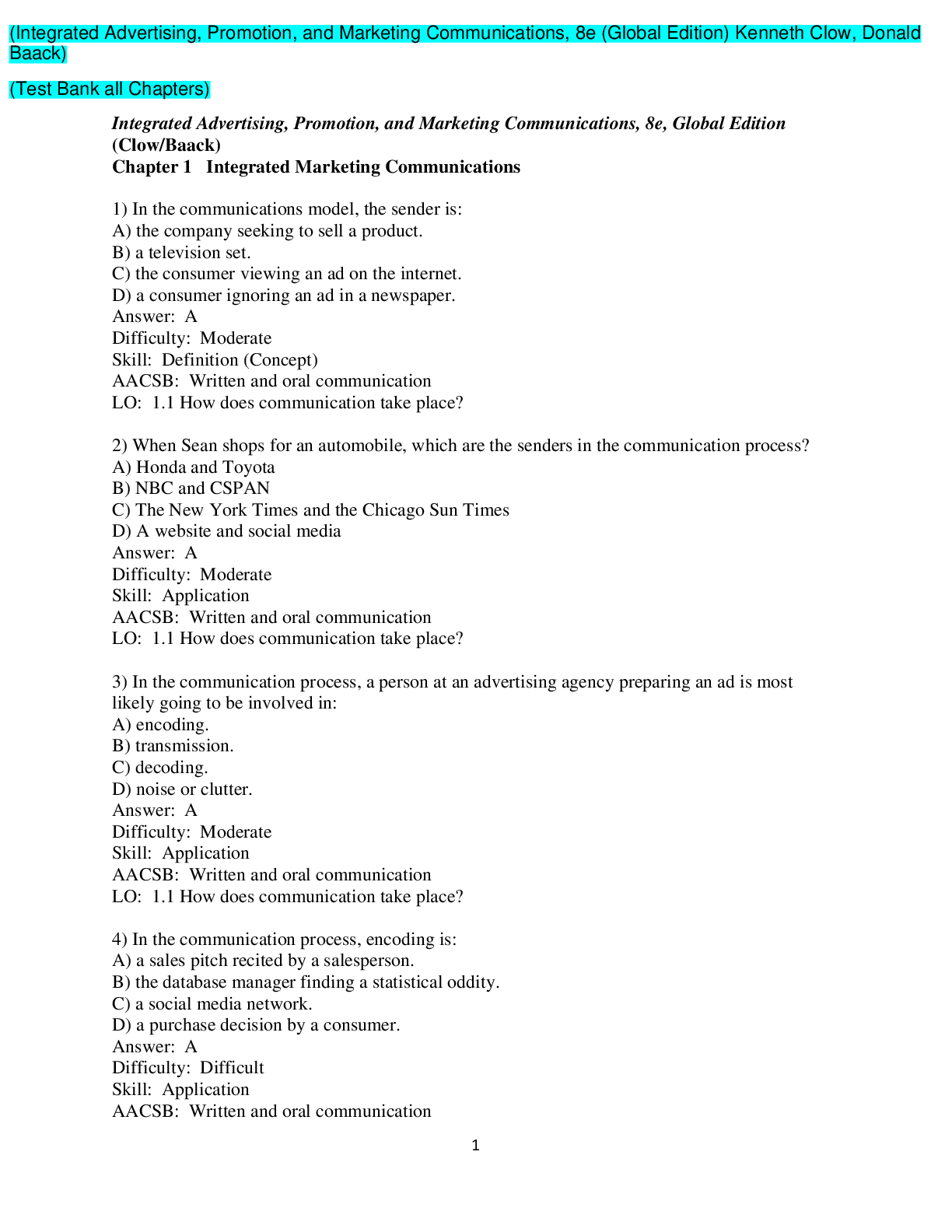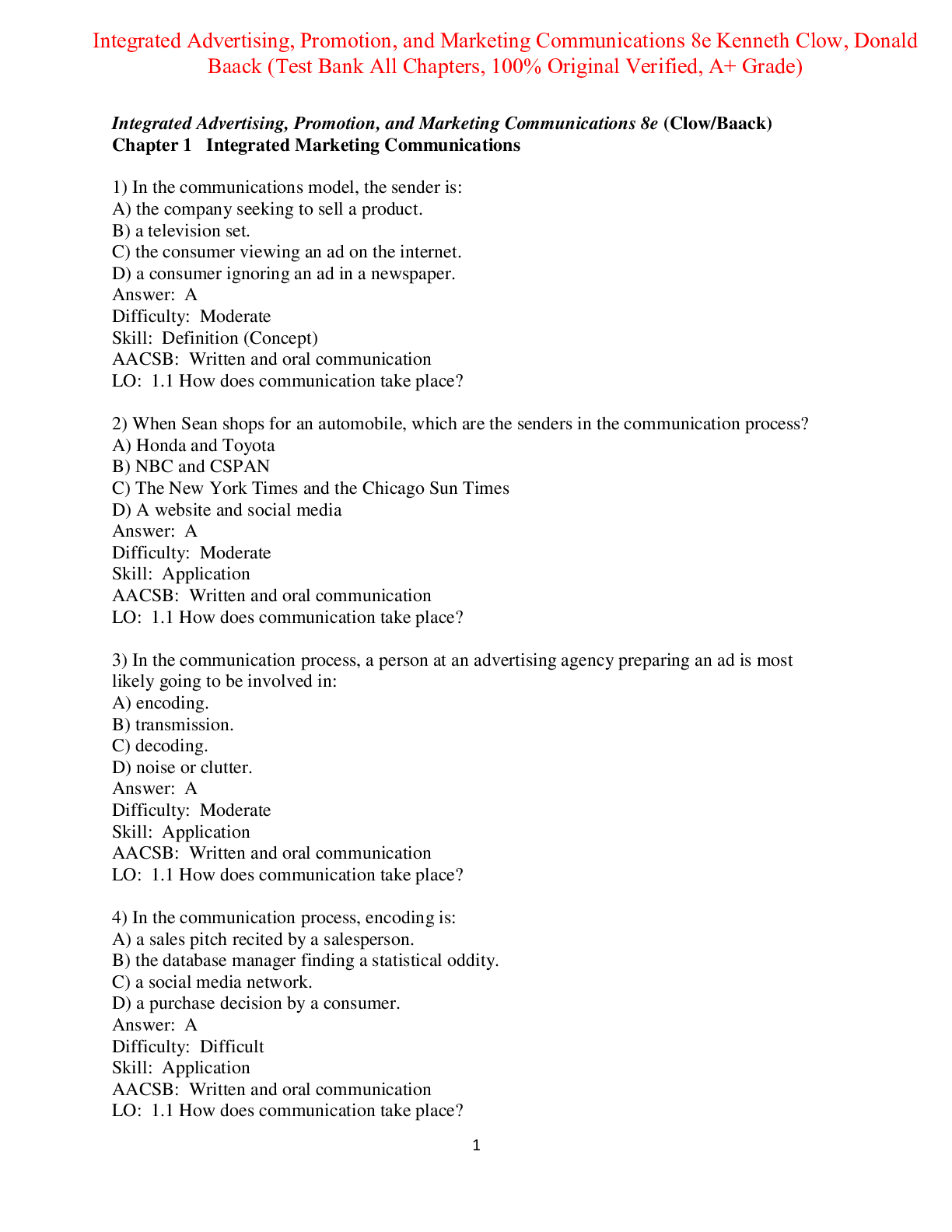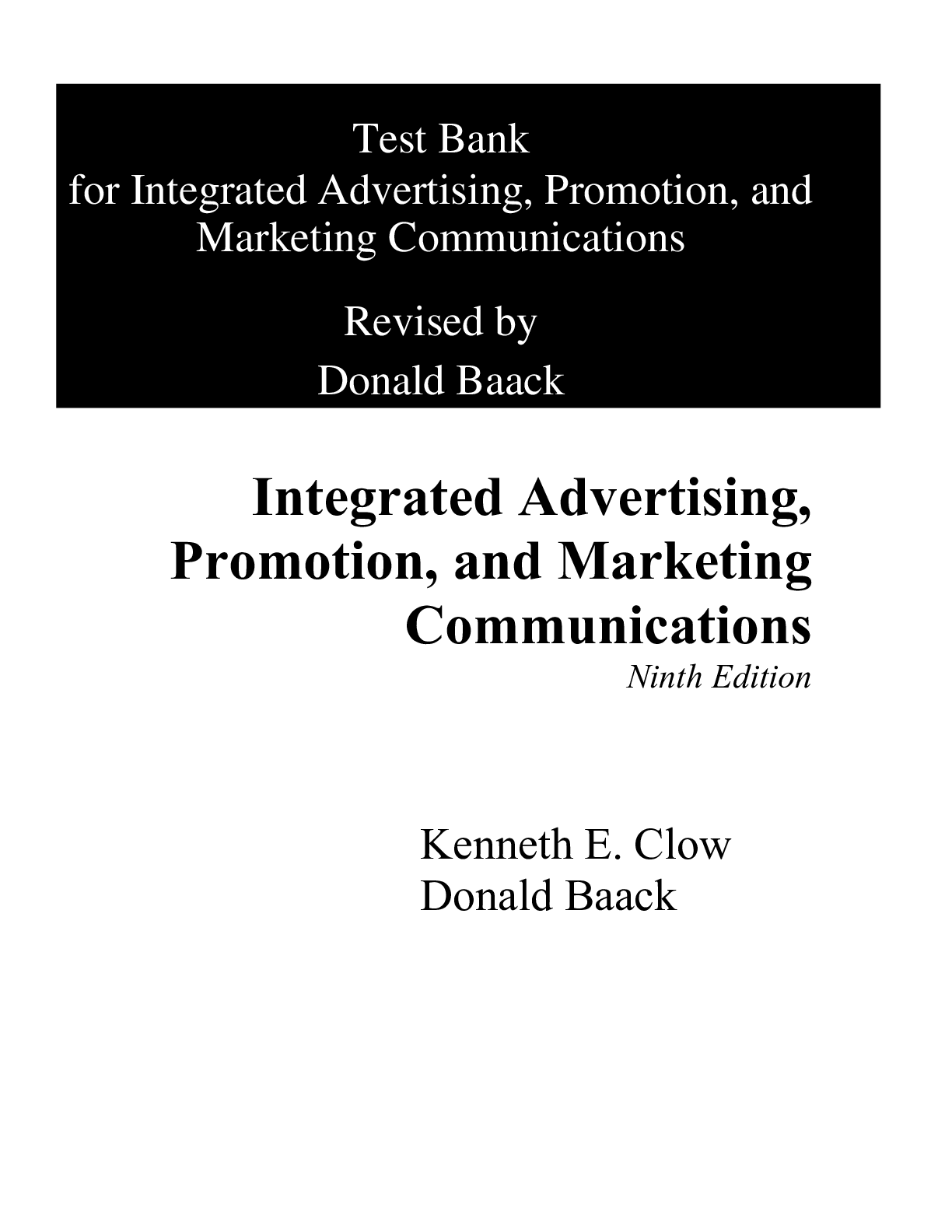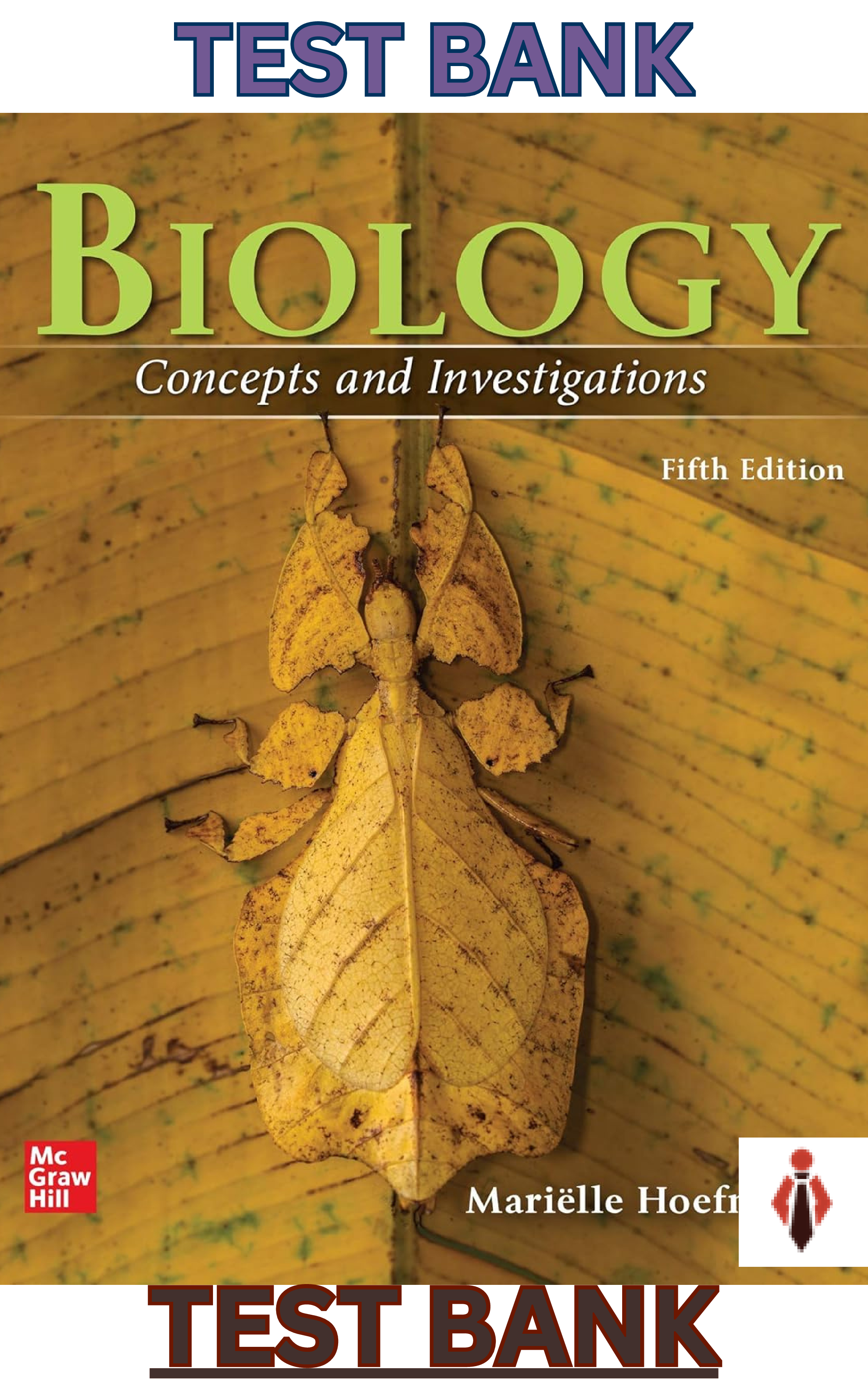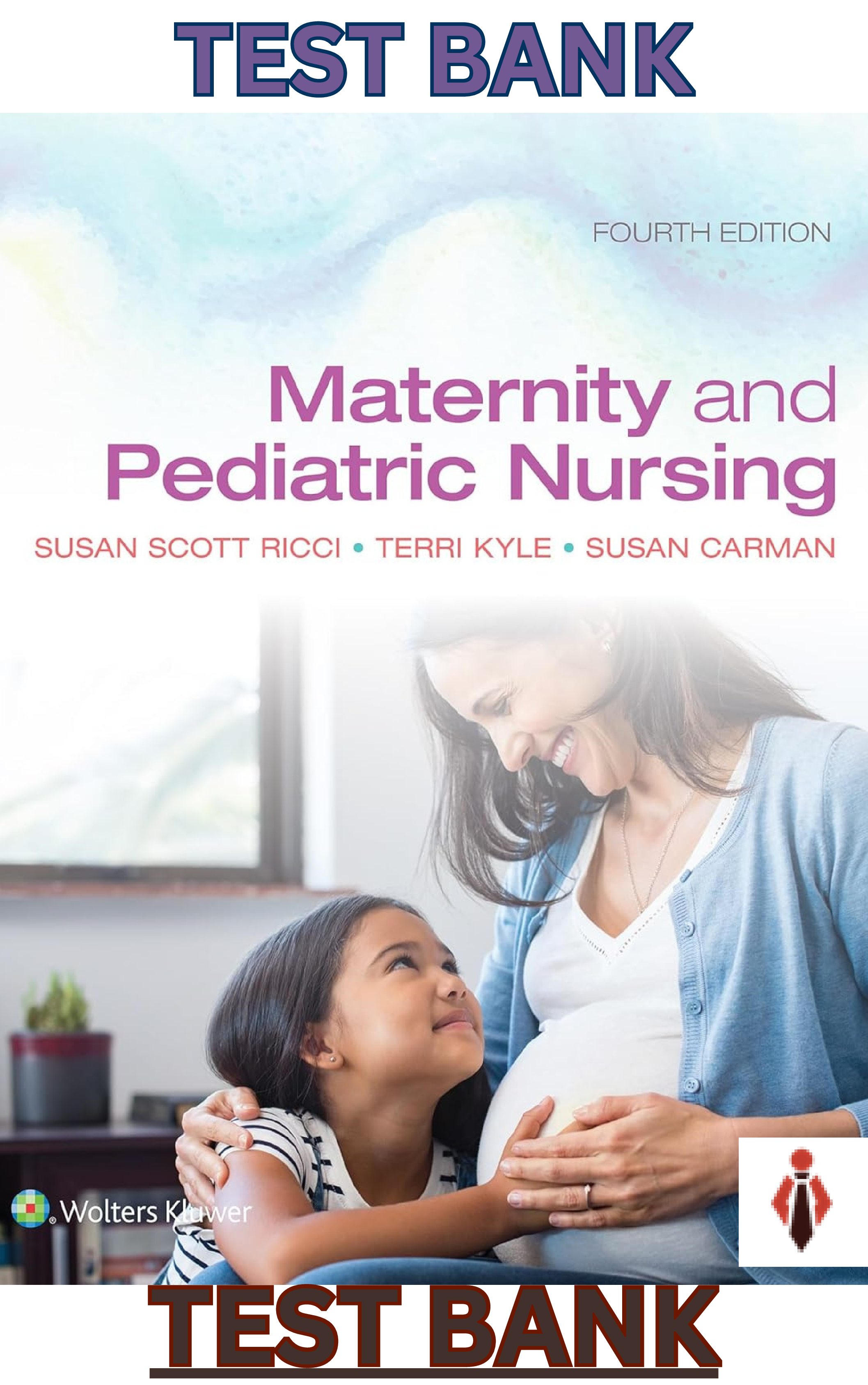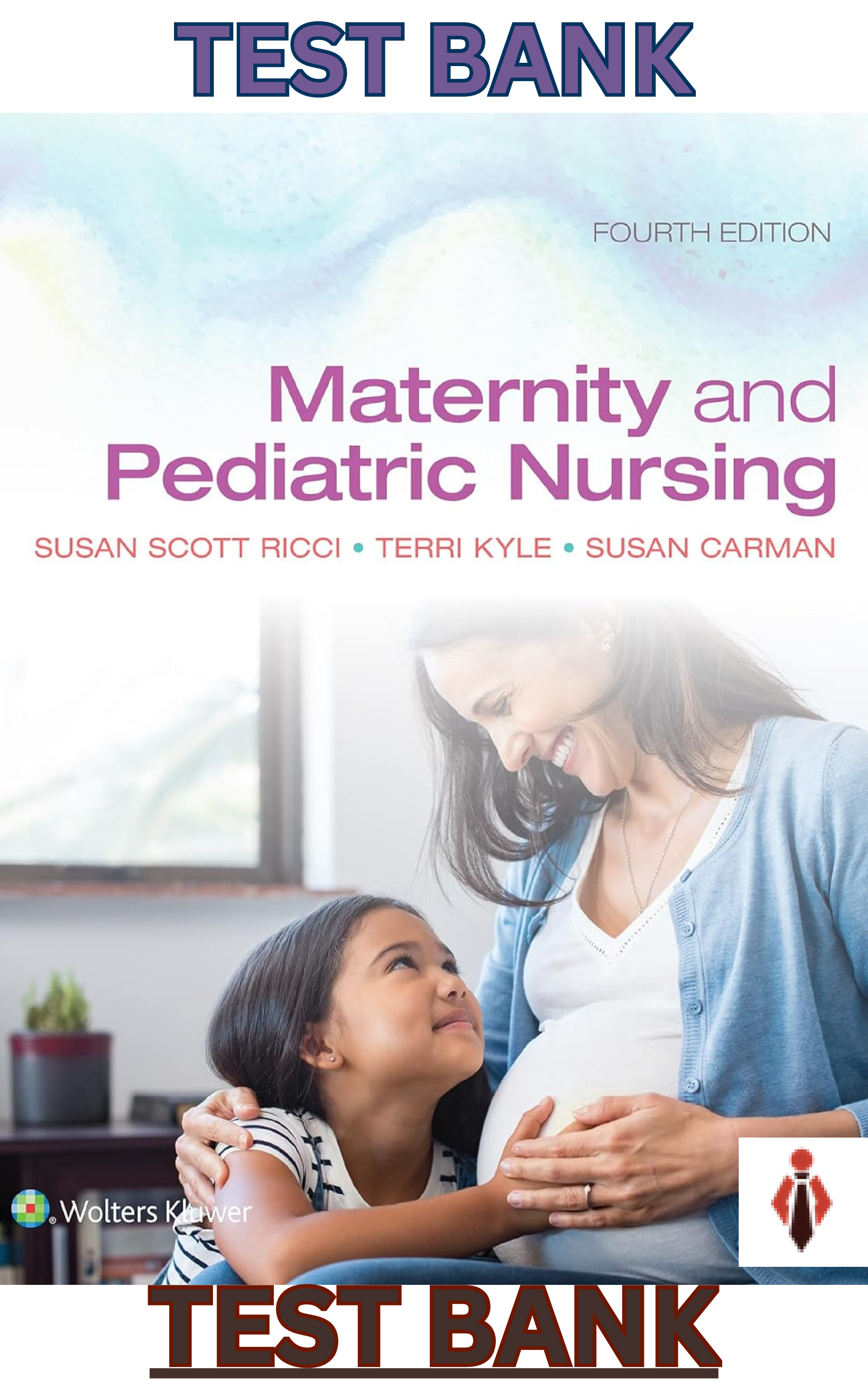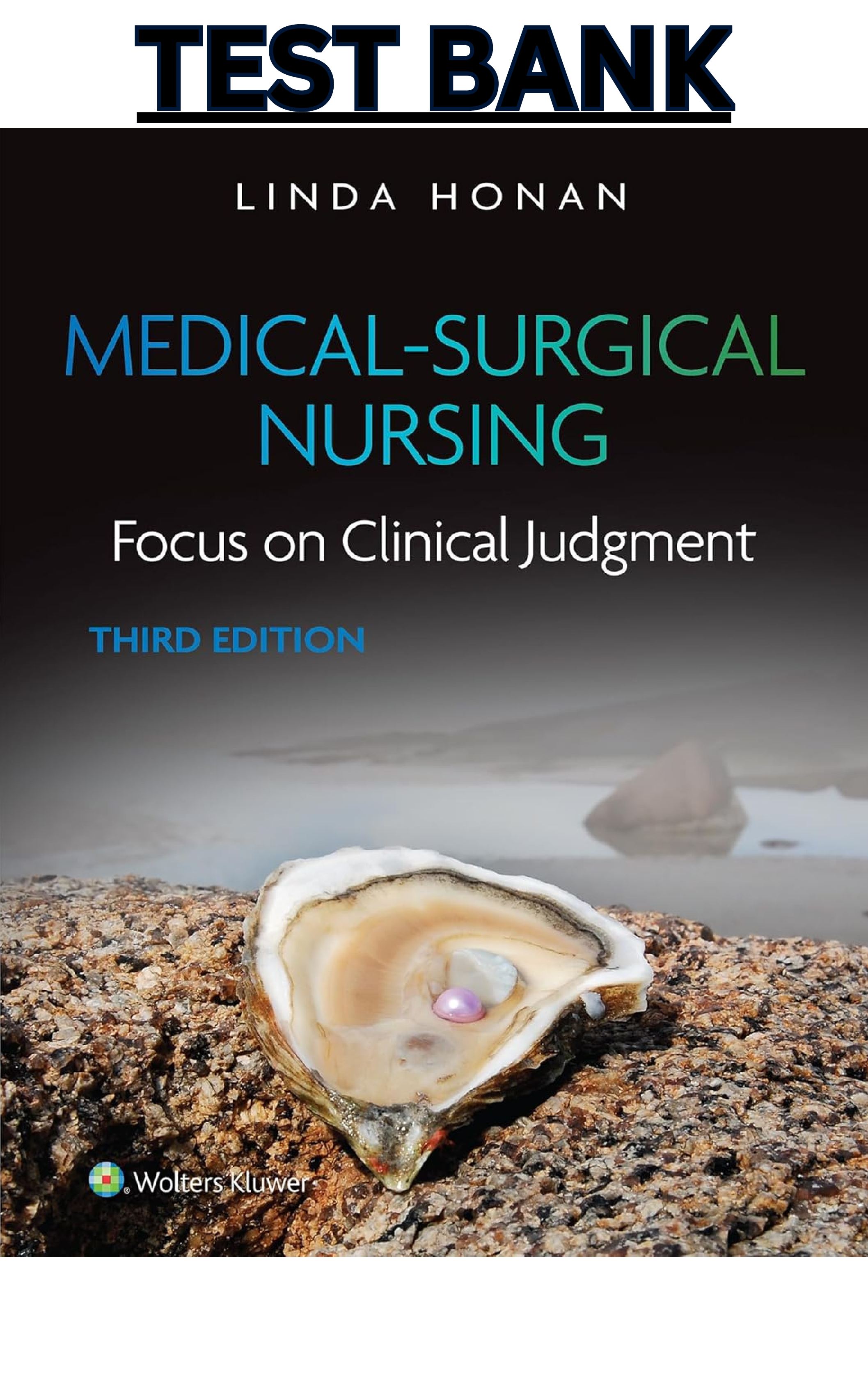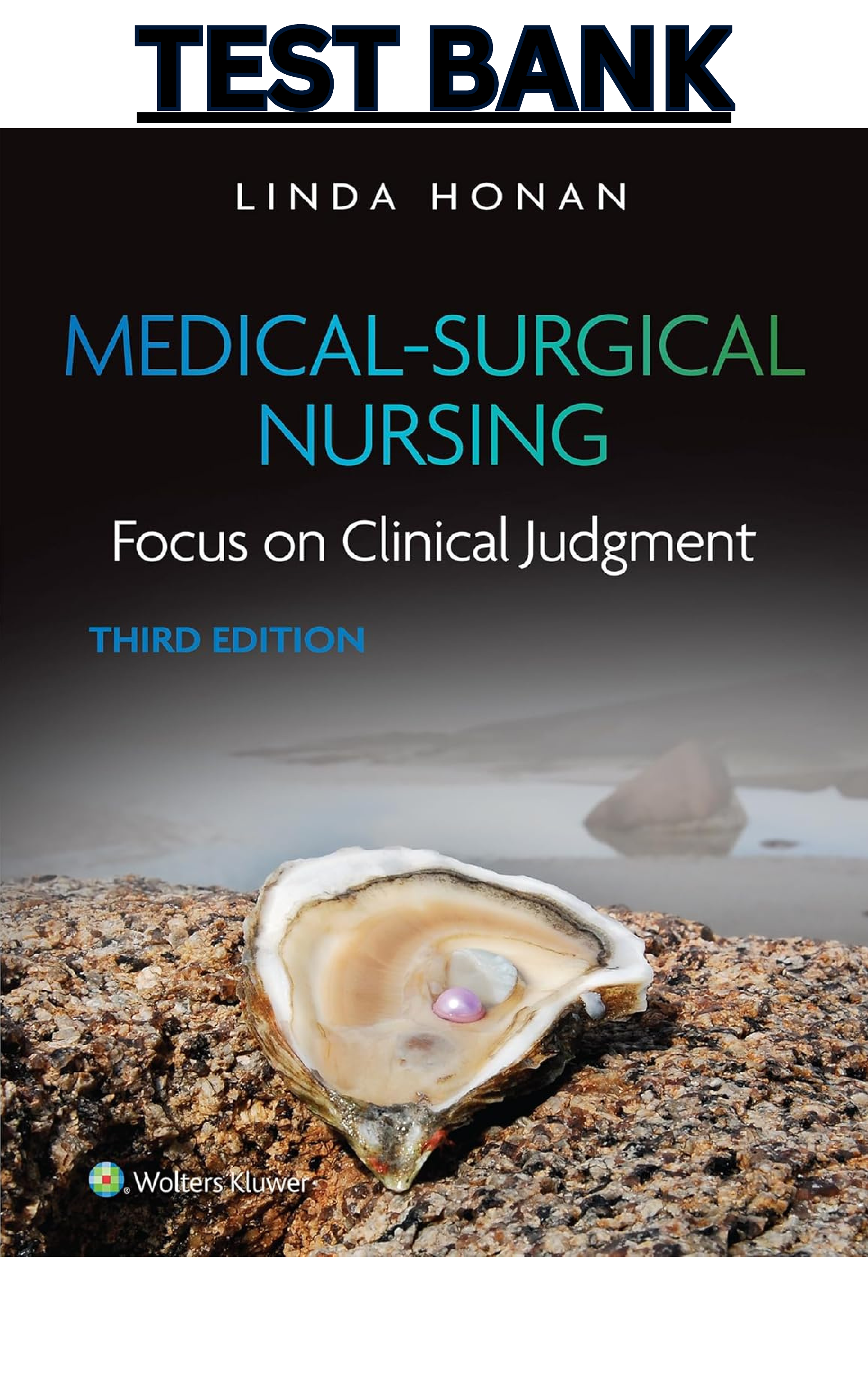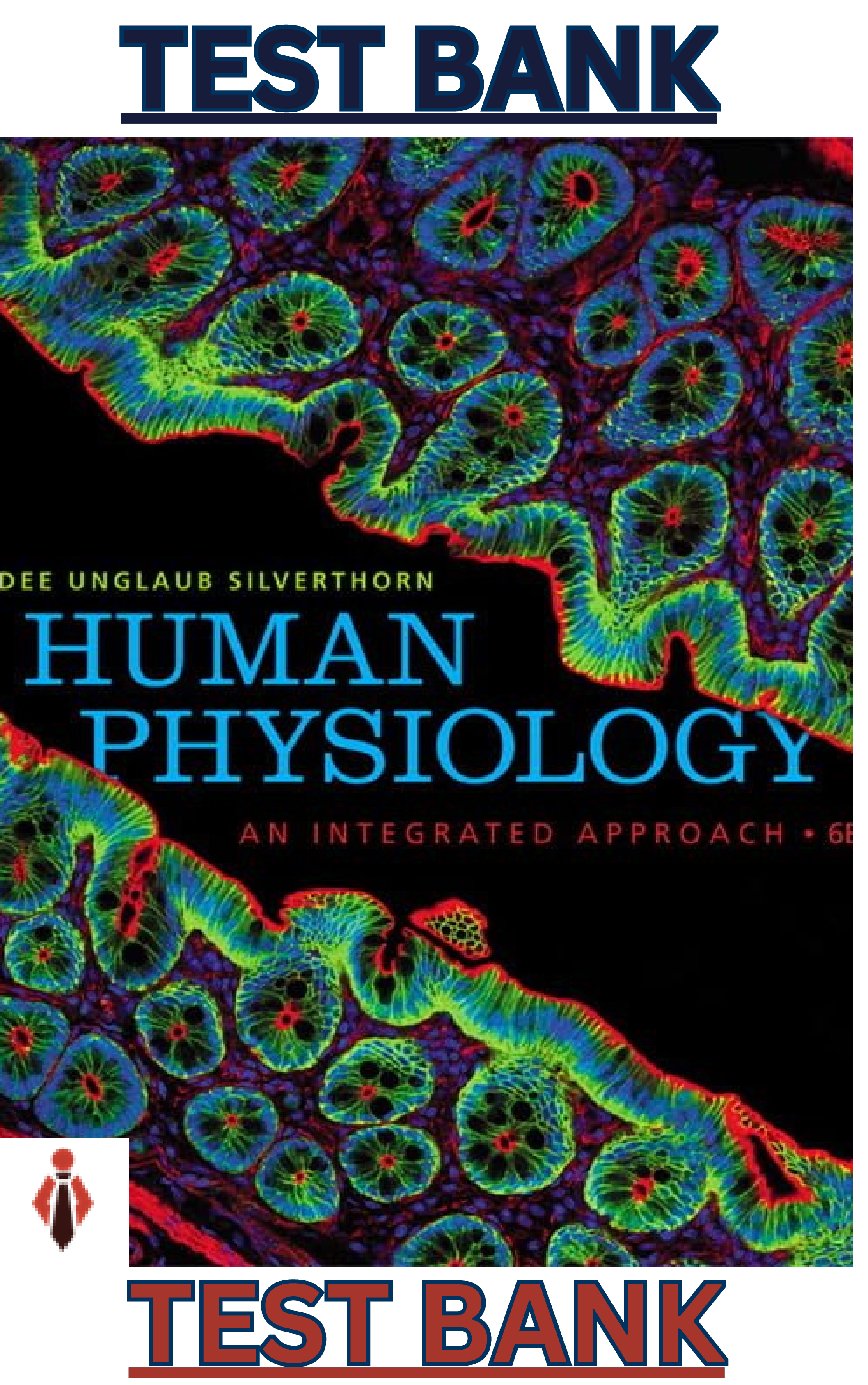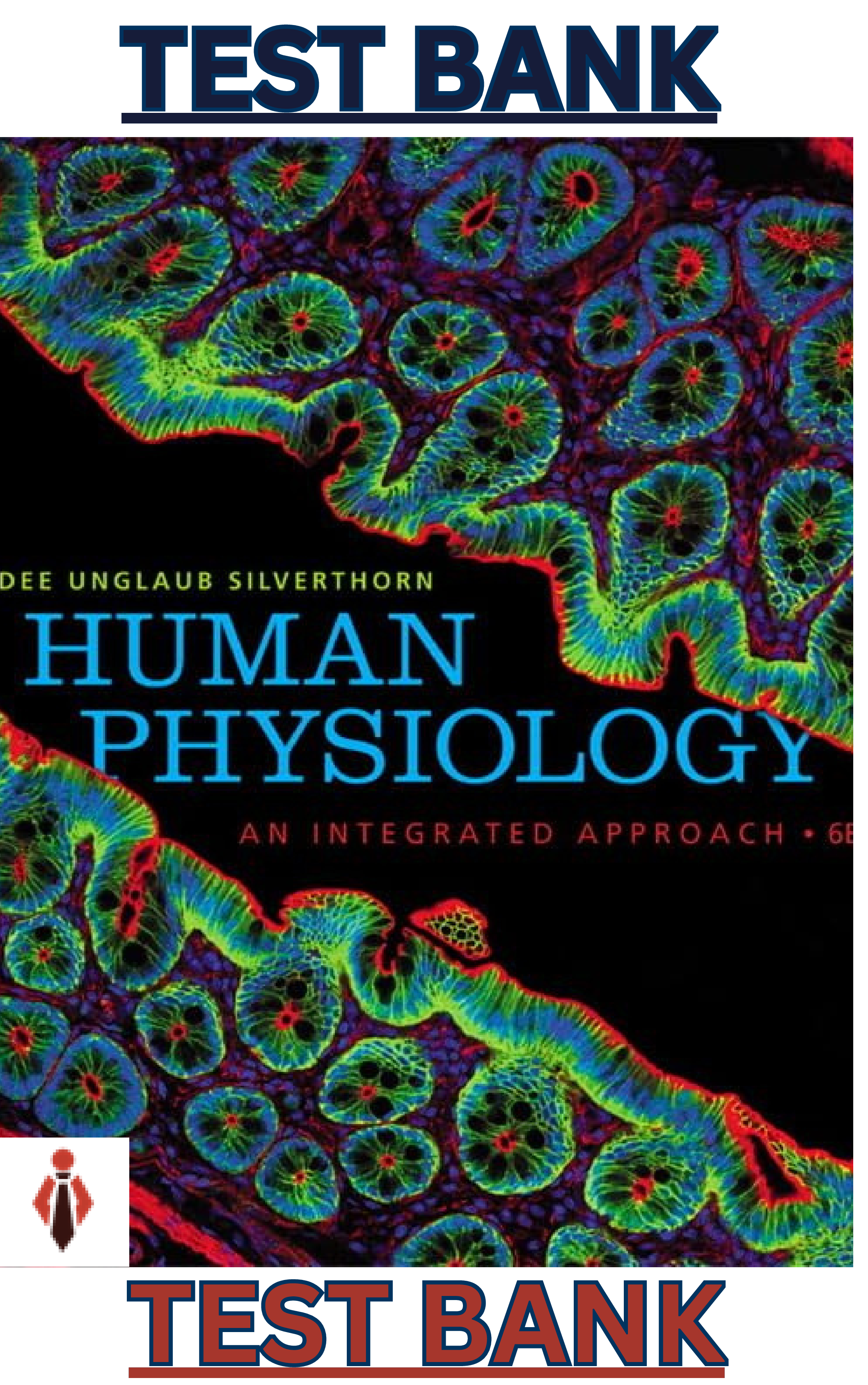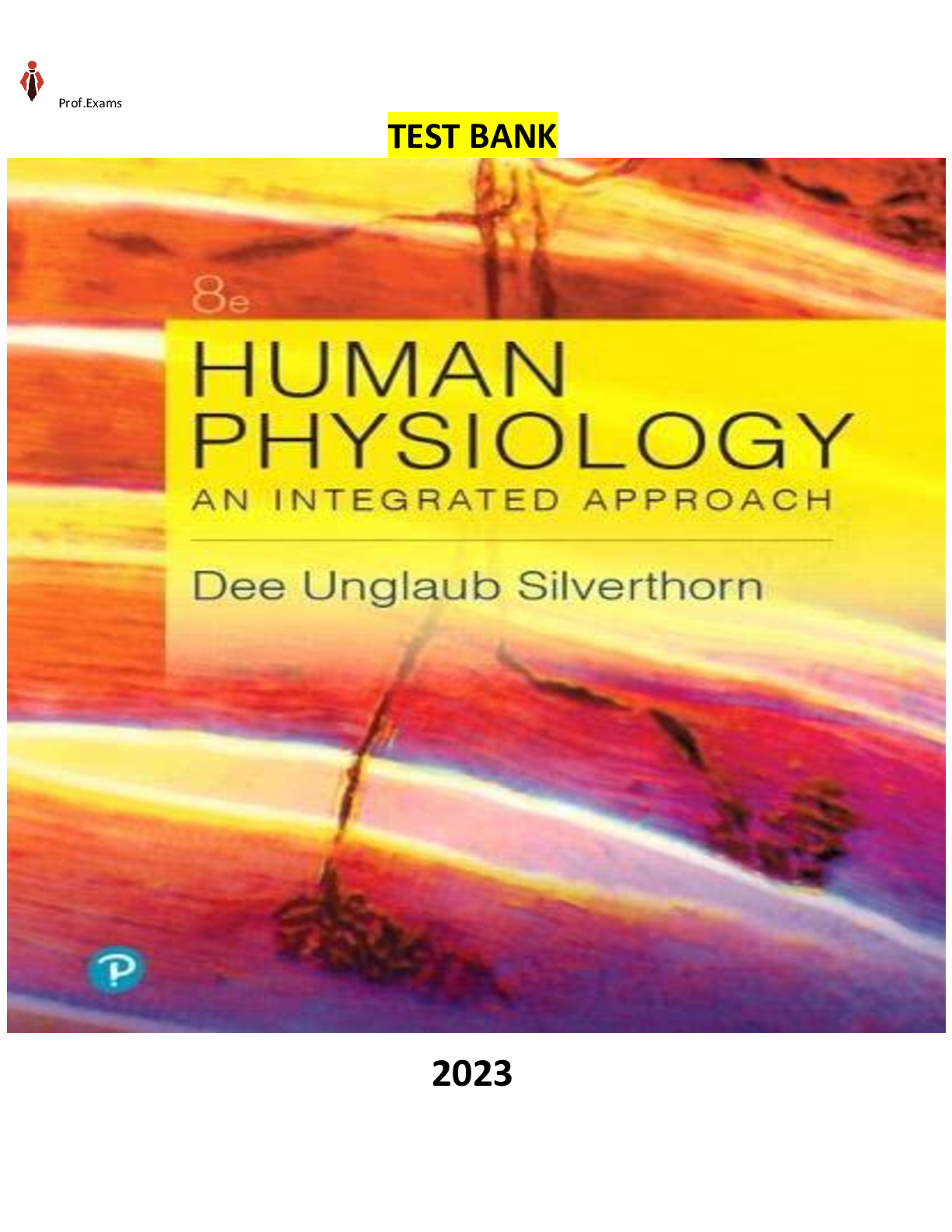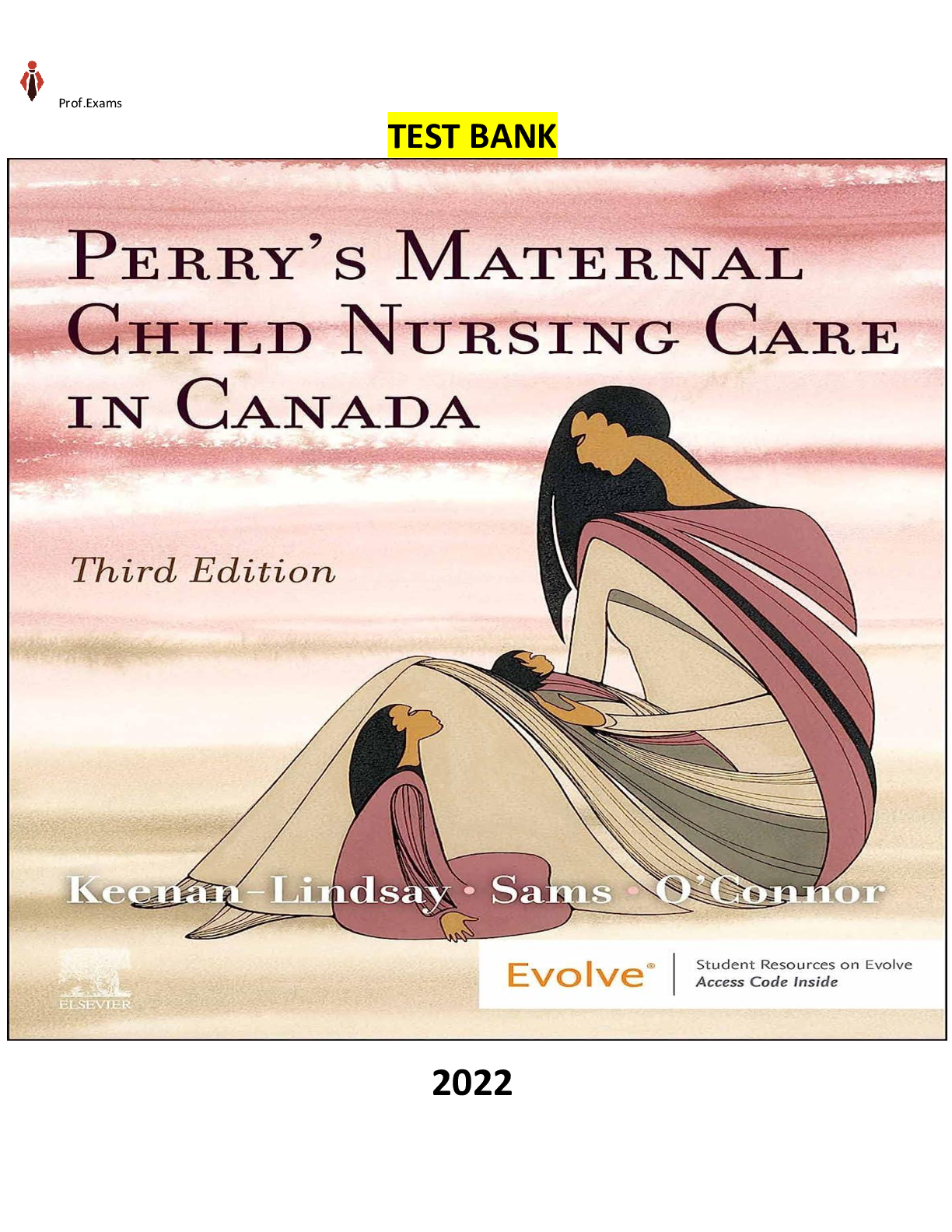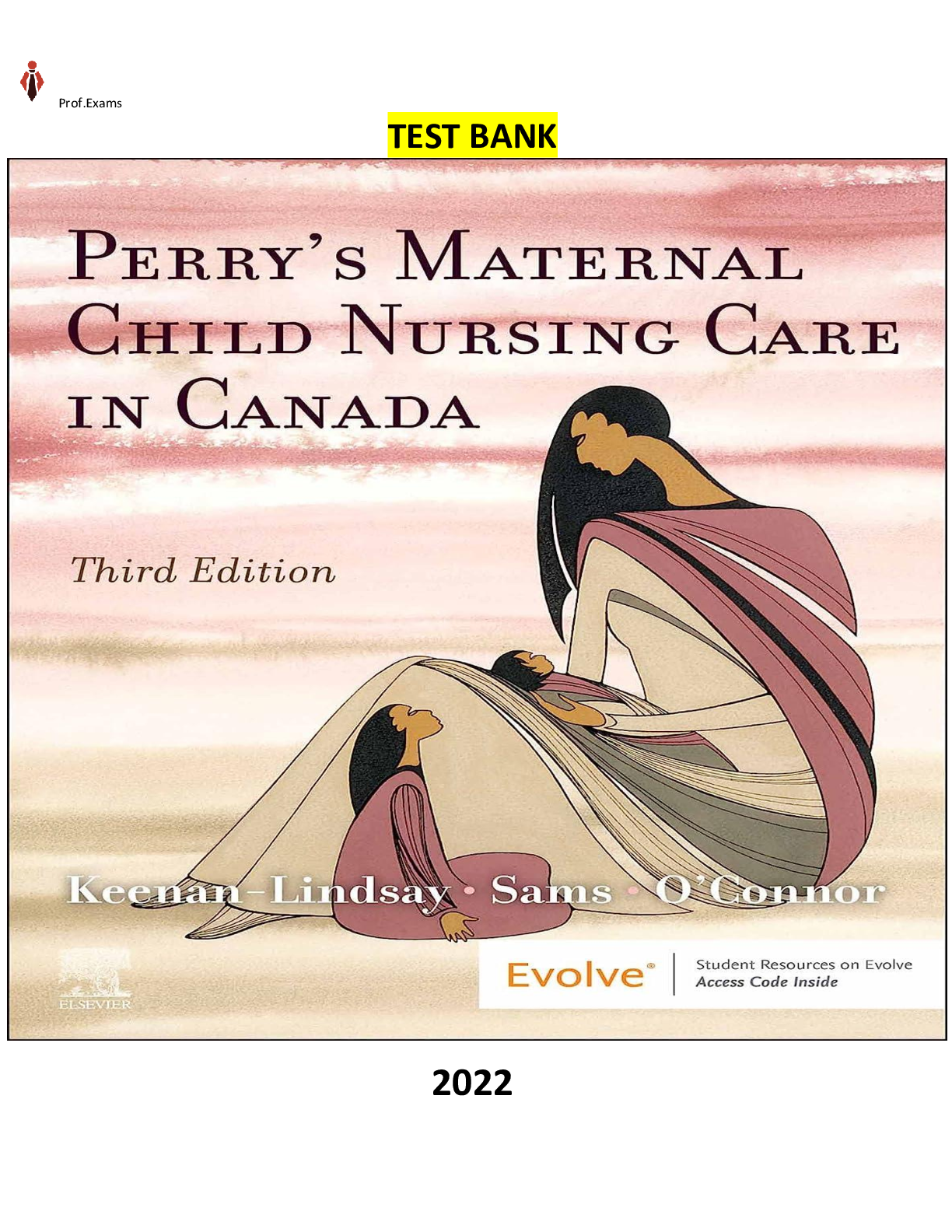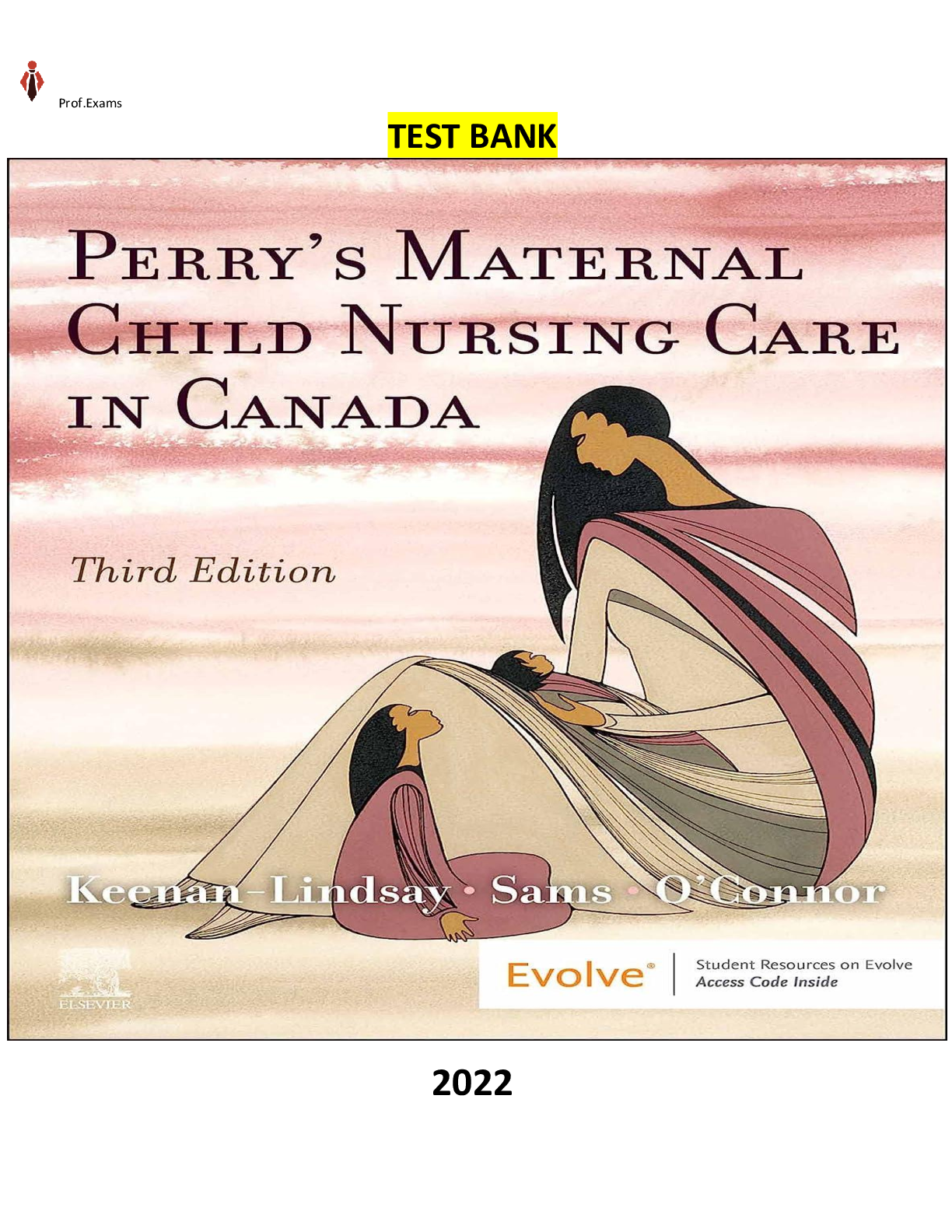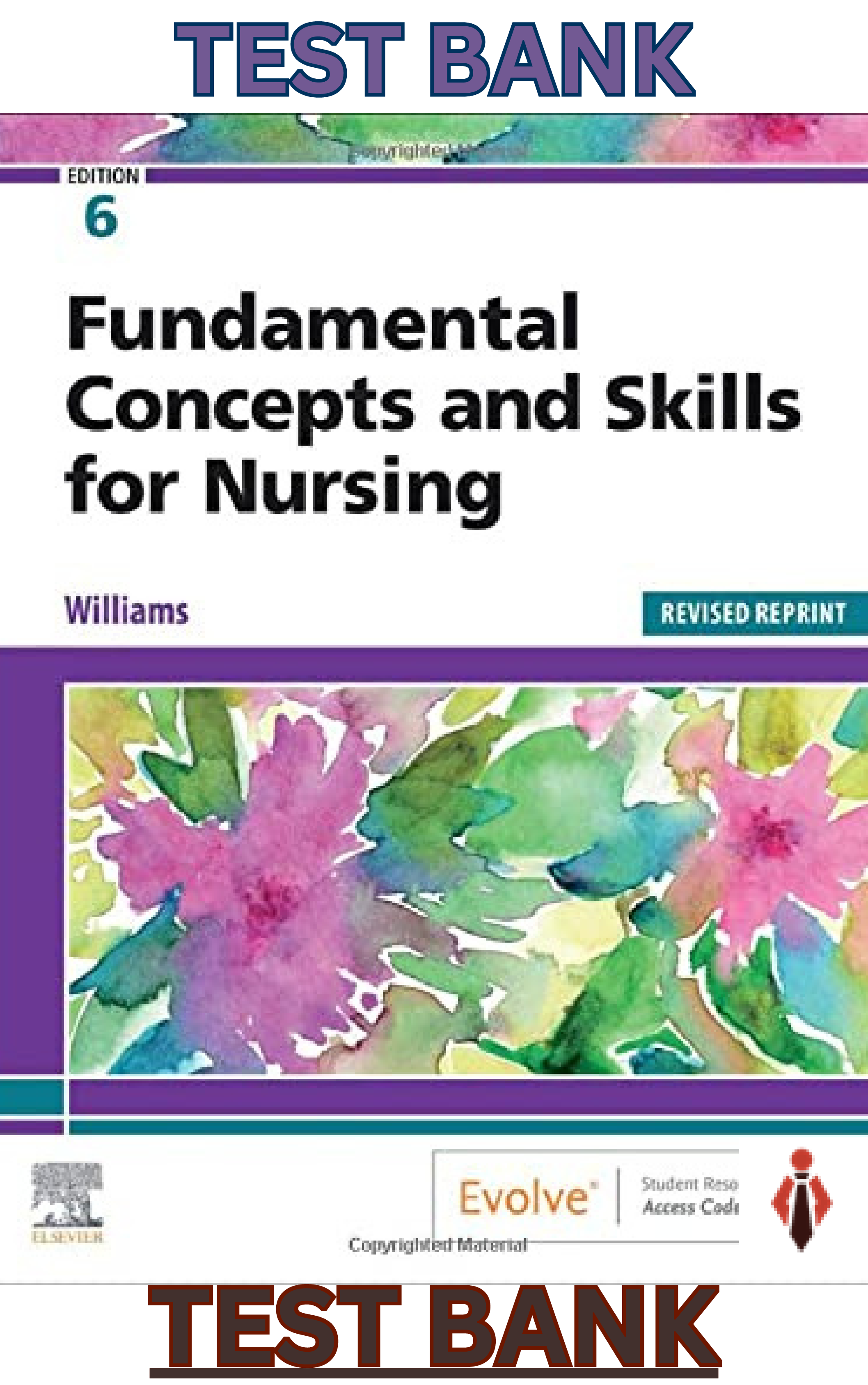Business Law > TEST BANK > Integrated Advertising Promotion and Marketing Communications 9th edition By Kenneth E Clow, Donald (All)
Integrated Advertising Promotion and Marketing Communications 9th edition By Kenneth E Clow, Donald E Baack (Test Bank)
Document Content and Description Below
Foreword xxvii Preface xxxi About the Author xlvii Chapter 1: The Art of Agile Analysis and Planning 1 1.1 Objectives 1 1.2 On Art and Agile Analysis 1 1.3 I Work for a Mainstream Company! Wha... t’s This Got to Do with Me? 5 1.4 Story 1: It’s Not My Problem 8 1.5 Story 2: The Cantankerous Customer 10 1.6 Chapter Summary 11 1.7 What’s Next? 11 Chapter 2: Agile Analysis and Planning: The Value Proposition 13 2.1 Objectives 13 2.2 What Is Agile Analysis and Planning? 13 2.3 Who Is a Business Analyst? 14 2.4 Why Agile Analysis and Planning? 15 2.5 The Parallel Histories of Agile and Business Analysis 16 2.6 Two Diagnoses for the Same Problem 18 2.7 The Business Analysis Diagnosis 19 2.8 The Business Analysis Track Record 19 2.9 The Agile Diagnosis 22 2.10 The Agile Track Record 22 2.11 Why Agile Teams Should Include an Effective BA Competency 24 2.12 Chapter Summary 25 2.13 What’s Next? 25 Chapter 3: Fundamentals of Agile Analysis and Planning 27 3.1 Objectives 27 3.2 What the Agile Manifesto Means for Business Analysis 28 3.3 What the Twelve Principles Mean for Business Analysis 29 3.4 Practices, Standards, and Frameworks 31 3.5 Overview of Agile Roles and the Business Analyst 58 3.6 Soft Skills of the Agile Business Analyst 63 3.7 13 Key Practices of Agile Analysis and How They Differ from Waterfall 65 3.8 Agile Business Analysis Rules of Thumb 68 3.9 Chapter Summary 68 3.10 What’s Next? 68 Chapter 4: Analysis and Planning Activities across the Agile Development Lifecycle 69 4.1 Objectives 69 4.2 Overview of the Agile Analysis and Planning Map 72 4.3 The Zones 72 4.4 The Lanes 73 4.5 A Story in Three Acts 74 4.6 Act 1: The Short Lane 74 4.7 Act 2: The Long Lane 79 4.8 Act 3: The Grand Lane 79 4.9 Chapter Summary 81 4.10 What’s Next? 81 Chapter 5: Preparing the Organization 83 5.1 Objectives 83 5.2 This Chapter on the Map 86 5.3 What Is Initiation and Planning? 86 5.4 How Long Should You Spend Up Front on Initiation and Planning? 87 5.5 The Purpose Alignment Model 88 5.6 Preparing the Infrastructure 90 5.7 Organizing Development Teams 93 5.8 Managing Stakeholder Expectations about Agile Development 99 5.9 Preparing the Customer–Developer Relationship 101 5.10 Agile Financial Planning 102 5.11 Preparing the Marketing and Distribution Teams 103 5.12 Preparing Channels and Supply Chains 104 5.13 Preparing Governance and Compliance 104 5.14 Preparing for Increased Demand on Resources 106 5.15 Preparing an Enterprise for Agile Development 107 5.16 Determine Organizational Readiness 112 5.17 Chapter Summary 113 5.18 What’s Next? 114 Chapter 6: Preparing the Process 115 6.1 Objectives 115 6.2 This Chapter on the Map 115 6.3 Process Preparation 118 6.4 Tailoring the Agile Practice to the Context 118 6.5 Tuning the Process 122 6.6 Optimizing the Process Using Value Stream Mapping 145 6.7 Determining Process Readiness 145 6.8 Chapter Summary 146 6.9 What’s Next? 146 Chapter 7: Visioning 147 7.1 Objectives 150 7.2 This Chapter on the Map 150 7.3 Overview of Product Visioning and Epic Preparation 150 7.4 Root-Cause Analysis 152 7.5 Specifying a Product or Epic 166 7.6 The Problem or Opportunity Statement 167 7.7 The Product Portrait 169 7.8 Crafting the Product and Epic Vision Statements 172 7.9 Stakeholder Analysis and Engagement 175 7.10 Analyzing Goals and Objectives 182 7.11 Analyze Leap of Faith Hypotheses 185 7.12 Chapter Summary 192 7.13 What’s Next? 192 Chapter 8: Seeding the Backlog—Discovering and Grading Features 193 8.1 Objectives 193 8.2 This Chapter on the Map 196 8.3 Overview: Seeding the Backlog 196 8.4 Circumstance-Based Market Segmentation for Feature Discovery 198 8.5 Other Ways to Discover Initial Features 198 8.6 Feature Independence 199 8.7 Using the Role-Feature-Reason Template to Represent Epics and Features 199 8.8 Specifying Emergent Features 200 8.9 Physical Representation of Features 200 8.10 Feature Attributes 201 8.11 Determining Customer and User Value with Kano Analysis 202 8.12 Sequencing Epics and Features in the Backlog 212 8.13 Writing Feature Acceptance Criteria 215 8.14 Analyzing Nonfunctional Requirements and Constraints 216 8.15 Chapter Summary 220 8.16 What’s Next? 220 Chapter 9: Long-Term Agile Planning 221 9.1 Objectives 221 9.2 This Chapter on the Map 224 9.3 Overview of Long-Term Planning, Epic Planning, and MVP 224 9.4 The Full-Potential Plan 225 9.5 Using MVPs to Validate the Assumptions behind the Plan 228 9.6 Capabilities for Effective MVP Implementation 231 9.7 Overview of the Product Roadmap 240 9.8 Planning the Interim Periods 241 9.9 Using the Product Roadmap for Shorter Planning Horizons 248 9.10 Chapter Summary 248 9.11 What’s Next? 249 Chapter 10: Quarterly and Feature Preparation 251 10.1 Objectives 251 10.2 This Chapter on the Map 254 10.3 Overview of Features 254 10.4 Benefits of Feature Preparation 256 10.5 Feature Preparation Activities 256 10.6 Timing of Feature Preparation 257 10.7 Assessing Readiness 258 10.8 Accounting for Preparation Work: Tasks and Spikes 258 10.9 Specifying Features and Their Acceptance Criteria 259 10.10 Context Analysis 263 10.11 Stakeholder Analysis 264 10.12 Persona Analysis 264 10.13 Overview of Journey, Process, and Value Stream Maps 272 10.14 Journey Mapping 272 10.15 Value Stream Mapping 283 10.16 Business Process Modeling 285 10.17 Use-Case Modeling 298 10.18 User-Role Modeling Workshops 300 10.19 Review the Architecture 307 10.20 Chapter Summary 312 10.21 What’s Next? 313 Chapter 11: Quarterly and Feature Planning 315 11.1 Objectives 315 11.2 This Chapter on the Map 318 11.3 Overview of Quarterly Planning 318 11.4 Overview of Flow-Based Feature Planning 318 11.5 When Is Planning at This Level Advised and Not Advised? 319 11.6 When to Use Quarterly Planning versus Flow-Based Feature Planning 319 11.7 How to Conduct Quarterly Planning with Agility 320 11.8 XP’s Planning Game Guidelines 322 11.9 Quarterly Planning: Timing Considerations 325 11.10 Preparing for the Planning Event 325 11.11 Planning Topics (Agenda) 328 11.12 Reviewing the Quarterly Plan, Once the Quarter Is Underway 351 11.13 Chapter Summary 352 11.14 What’s Next? 352 Chapter 12: MVPs and Story Maps 353 12.1 Objectives 353 12.2 This Chapter on the Map 356 12.3 MVPs and Story Mapping: How the Tools Complement Each Other 356 12.4 MVP Planning 356 12.5 Story Mapping 366 12.6 Chapter Summary 388 12.7 What’s Next? 388 Chapter 13: Story Preparation 391 13.1 Objectives 391 13.2 This Chapter on the Map 394 13.3 Overview of Story Preparation 394 13.4 Story Fundamentals 394 13.5 The Three Cs of Stories 397 13.6 Who Is Responsible for User Stories? 398 13.7 Physical versus Electronic Stories 403 13.8 Specifying Values for Story Attributes 404 13.9 Writing the Story Description 404 13.10 Specifying Story Acceptance Criteria 407 13.11 Stories That Aren’t User Stories 414 13.12 Guidelines for Writing High-Quality Stories 420 13.13 Patterns for Splitting Stories 422 13.14 Analyzing Business Rules and AC with Decision Tables 433 13.15 Chapter Summary 440 13.16 What’s Next? 440 Chapter 14: Iteration and Story Planning 441 14.1 Objectives 441 14.2 This Chapter on the Map 444 14.3 Overview of Iteration and Story Planning 444 14.4 Attendees 445 14.5 Duration 445 14.6 Inputs for Iteration Planning 445 14.7 Deliverables of Iteration Planning 446 14.8 Planning Rules 447 14.9 Part 1: Forecast What Will Be Accomplished 447 14.10 Part 2: Plan the Implementation 451 14.11 Setting Up the Kanban Board 458 14.12 Scaling Iteration Planning 462 14.13 Feature Preview Meeting 462 14.14 Chapter Summary 463 14.15 What’s Next? 463 Chapter 15: Rolling Analysis and Preparation—Day-to-Day Activities 465 15.1 Objectives 465 15.2 This Chapter on the Map 468 15.3 Overview of Rolling Analysis 468 15.4 Updating Task Progress 470 15.5 Triad Guideline 470 15.6 Actions That May Be Taken against a Developer Task 471 15.7 Monitoring Progress 471 15.8 Story Testing and Inspection (Analyze-Code-Build-Test) 490 15.9 Managing Scope Change during the Iteration 495 15.10 Updating Business Analysis Documentation 496 15.11 Ongoing Analysis of Upcoming Epics, Features, and Stories 509 15.12 Accounting for Progress at the End of the Iteration 513 15.13 The Iteration Review 514 15.14 The Iteration Retrospective 517 15.15 Chapter Summary 524 15.16 What’s Next? 525 Chapter 16: Releasing the Product 527 16.1 Objectives 527 16.2 This Chapter on the Map 530 16.3 Getting Stories to Done 530 16.4 Releasing to the Market: Timing Considerations 530 16.5 Staging the Release 532 16.6 Quarterly (Release) Retrospective 539 16.7 Pivot-or-Persevere Meeting 544 16.8 Chapter Summary 547 16.9 What’s Next? 548 Chapter 17: Scaling Agility 549 17.1 Objectives 552 17.2 This Chapter on the Map 552 17.3 Why Do We Need a Scaled Agile Approach? 552 17.4 Planning: Choosing an Approach That Supports Inter-team Collaboration 554 17.5 Continuous Delivery: Delivering Software Continuously, Safely, and Sustainably at Scale 558 17.6 Scaled Agile Culture: Creating a Culture That Supports Innovation at Scale 564 17.7 Scaling the Backlog 566 17.8 Scaling the Agile Organization 570 17.9 Scaling the Agile Process 581 17.10 Agile Requirements Management Software Tools 615 17.11 Lightweight Tools for Supporting Inter-team Collaboration 615 17.12 Potential Issues and Challenges in Scaling Agility 617 17.13 Chapter Summary 622 17.14 What’s Next? 622 Chapter 18: Achieving Enterprise Agility 623 18.1 Objectives 623 18.2 This Chapter on the Map 626 18.3 Overview of Enterprise Agility 627 18.4 Foundational Practices 629 18.5 Overview of the Agile Process for Developing Innovative Products 631 18.6 Agile Corporate Culture 632 18.7 Overview of Principles and Practices for an Agile Corporate Culture 634 18.8 Three Principles for Applying Agile Practices 635 18.9 The Thirteen Practices for an Agile Corporate Culture 650 18.10 Agile Financial Planning 675 18.11 Chapter Summary 676 Appendix A: Additional Resources and Checklists 677 A.1 Mapping of Book Chapters to IIBA and PMI Guides 677 A.2 Rules of Thumb in Agile Analysis and Planning 682 A.3 Facilitation Tips 684 A.4 Visioning Checklist 686 A.5 Stakeholder Checklist 687 A.6 NFRs and Constraints Checklist 689 A.7 Readiness Checklist for Quarterly Planning 690 A.8 Checklist of Invitees for Quarterly Planning 692 A.9 Checklist of Quarterly and Feature Planning Inputs 693 A.10 Checklist of Quarterly and Feature Planning Deliverables 694 A.11 Checklist of Quarterly (Release) Retrospective Questions 695 A.12 Checklist of Invitees for Scaled Quarterly and Feature Planning 698 A.13 Overview of Agile Requirements Management Tools 699 Appendix B: Discovery-Driven Planning Case Study: BestBots 701 B.1 Background: BestBots Case Study 701 B.2 Initial Market Analysis 702 B.3 Determine Constraints (Required Outcomes) 703 B.4 Create Draft of Reverse Income Statement 705 B.5 Create Pro Forma Operations Specifications 706 B.6 Create Assumptions Checklist 708 B.7 Revise Reverse Income Statement 709 B.8 Create Milestone Planning Chart 710 Bibliography 713 Index 715 Foreword xxvii Preface xxxi About the Author xlvii Chapter 1: The Art of Agile Analysis and Planning 1 1.1 Objectives 1 1.2 On Art and Agile Analysis 1 1.3 I Work for a Mainstream Company! What’s This Got to Do with Me? 5 1.4 Story 1: It’s Not My Problem 8 1.5 Story 2: The Cantankerous Customer 10 1.6 Chapter Summary 11 1.7 What’s Next? 11 Chapter 2: Agile Analysis and Planning: The Value Proposition 13 2.1 Objectives 13 2.2 What Is Agile Analysis and Planning? 13 2.3 Who Is a Business Analyst? 14 2.4 Why Agile Analysis and Planning? 15 2.5 The Parallel Histories of Agile and Business Analysis 16 2.6 Two Diagnoses for the Same Problem 18 2.7 The Business Analysis Diagnosis 19 2.8 The Business Analysis Track Record 19 2.9 The Agile Diagnosis 22 2.10 The Agile Track Record 22 2.11 Why Agile Teams Should Include an Effective BA Competency 24 2.12 Chapter Summary 25 2.13 What’s Next? 25 Chapter 3: Fundamentals of Agile Analysis and Planning 27 3.1 Objectives 27 3.2 What the Agile Manifesto Means for Business Analysis 28 3.3 What the Twelve Principles Mean for Business Analysis 29 3.4 Practices, Standards, and Frameworks 31 3.5 Overview of Agile Roles and the Business Analyst 58 3.6 Soft Skills of the Agile Business Analyst 63 3.7 13 Key Practices of Agile Analysis and How They Differ from Waterfall 65 3.8 Agile Business Analysis Rules of Thumb 68 3.9 Chapter Summary 68 3.10 What’s Next? 68 Chapter 4: Analysis and Planning Activities across the Agile Development Lifecycle 69 4.1 Objectives 69 4.2 Overview of the Agile Analysis and Planning Map 72 4.3 The Zones 72 4.4 The Lanes 73 4.5 A Story in Three Acts 74 4.6 Act 1: The Short Lane 74 4.7 Act 2: The Long Lane 79 4.8 Act 3: The Grand Lane 79 4.9 Chapter Summary 81 4.10 What’s Next? 81 Chapter 5: Preparing the Organization 83 5.1 Objectives 83 5.2 This Chapter on the Map 86 5.3 What Is Initiation and Planning? 86 5.4 How Long Should You Spend Up Front on Initiation and Planning? 87 5.5 The Purpose Alignment Model 88 5.6 Preparing the Infrastructure 90 5.7 Organizing Development Teams 93 5.8 Managing Stakeholder Expectations about Agile Development 99 5.9 Preparing the Customer–Developer Relationship 101 5.10 Agile Financial Planning 102 5.11 Preparing the Marketing and Distribution Teams 103 5.12 Preparing Channels and Supply Chains 104 5.13 Preparing Governance and Compliance 104 5.14 Preparing for Increased Demand on Resources 106 5.15 Preparing an Enterprise for Agile Development 107 5.16 Determine Organizational Readiness 112 5.17 Chapter Summary 113 5.18 What’s Next? 114 Chapter 6: Preparing the Process 115 6.1 Objectives 115 6.2 This Chapter on the Map 115 6.3 Process Preparation 118 6.4 Tailoring the Agile Practice to the Context 118 6.5 Tuning the Process 122 6.6 Optimizing the Process Using Value Stream Mapping 145 6.7 Determining Process Readiness 145 6.8 Chapter Summary 146 6.9 What’s Next? 146 Chapter 7: Visioning 147 7.1 Objectives 150 7.2 This Chapter on the Map 150 7.3 Overview of Product Visioning and Epic Preparation 150 7.4 Root-Cause Analysis 152 7.5 Specifying a Product or Epic 166 7.6 The Problem or Opportunity Statement 167 7.7 The Product Portrait 169 7.8 Crafting the Product and Epic Vision Statements 172 7.9 Stakeholder Analysis and Engagement 175 7.10 Analyzing Goals and Objectives 182 7.11 Analyze Leap of Faith Hypotheses 185 7.12 Chapter Summary 192 7.13 What’s Next? 192 Chapter 8: Seeding the Backlog—Discovering and Grading Features 193 8.1 Objectives 193 8.2 This Chapter on the Map 196 8.3 Overview: Seeding the Backlog 196 8.4 Circumstance-Based Market Segmentation for Feature Discovery 198 8.5 Other Ways to Discover Initial Features 198 8.6 Feature Independence 199 8.7 Using the Role-Feature-Reason Template to Represent Epics and Features 199 8.8 Specifying Emergent Features 200 8.9 Physical Representation of Features 200 8.10 Feature Attributes 201 8.11 Determining Customer and User Value with Kano Analysis 202 8.12 Sequencing Epics and Features in the Backlog 212 8.13 Writing Feature Acceptance Criteria 215 8.14 Analyzing Nonfunctional Requirements and Constraints 216 8.15 Chapter Summary 220 8.16 What’s Next? 220 Chapter 9: Long-Term Agile Planning 221 9.1 Objectives 221 9.2 This Chapter on the Map 224 9.3 Overview of Long-Term Planning, Epic Planning, and MVP 224 9.4 The Full-Potential Plan 225 9.5 Using MVPs to Validate the Assumptions behind the Plan 228 9.6 Capabilities for Effective MVP Implementation 231 9.7 Overview of the Product Roadmap 240 9.8 Planning the Interim Periods 241 9.9 Using the Product Roadmap for Shorter Planning Horizons 248 9.10 Chapter Summary 248 9.11 What’s Next? 249 Chapter 10: Quarterly and Feature Preparation 251 10.1 Objectives 251 10.2 This Chapter on the Map 254 10.3 Overview of Features 254 10.4 Benefits of Feature Preparation 256 10.5 Feature Preparation Activities 256 10.6 Timing of Feature Preparation 257 10.7 Assessing Readiness 258 10.8 Accounting for Preparation Work: Tasks and Spikes 258 10.9 Specifying Features and Their Acceptance Criteria 259 10.10 Context Analysis 263 10.11 Stakeholder Analysis 264 10.12 Persona Analysis 264 10.13 Overview of Journey, Process, and Value Stream Maps 272 10.14 Journey Mapping 272 10.15 Value Stream Mapping 283 10.16 Business Process Modeling 285 10.17 Use-Case Modeling 298 10.18 User-Role Modeling Workshops 300 10.19 Review the Architecture 307 10.20 Chapter Summary 312 10.21 What’s Next? 313 Chapter 11: Quarterly and Feature Planning 315 11.1 Objectives 315 11.2 This Chapter on the Map 318 11.3 Overview of Quarterly Planning 318 11.4 Overview of Flow-Based Feature Planning 318 11.5 When Is Planning at This Level Advised and Not Advised? 319 11.6 When to Use Quarterly Planning versus Flow-Based Feature Planning 319 11.7 How to Conduct Quarterly Planning with Agility 320 11.8 XP’s Planning Game Guidelines 322 11.9 Quarterly Planning: Timing Considerations 325 11.10 Preparing for the Planning Event 325 11.11 Planning Topics (Agenda) 328 11.12 Reviewing the Quarterly Plan, Once the Quarter Is Underway 351 11.13 Chapter Summary 352 11.14 What’s Next? 352 Chapter 12: MVPs and Story Maps 353 12.1 Objectives 353 12.2 This Chapter on the Map 356 12.3 MVPs and Story Mapping: How the Tools Complement Each Other 356 12.4 MVP Planning 356 12.5 Story Mapping 366 12.6 Chapter Summary 388 12.7 What’s Next? 388 Chapter 13: Story Preparation 391 13.1 Objectives 391 13.2 This Chapter on the Map 394 13.3 Overview of Story Preparation 394 13.4 Story Fundamentals 394 13.5 The Three Cs of Stories 397 13.6 Who Is Responsible for User Stories? 398 13.7 Physical versus Electronic Stories 403 13.8 Specifying Values for Story Attributes 404 13.9 Writing the Story Description 404 13.10 Specifying Story Acceptance Criteria 407 13.11 Stories That Aren’t User Stories 414 13.12 Guidelines for Writing High-Quality Stories 420 13.13 Patterns for Splitting Stories 422 13.14 Analyzing Business Rules and AC with Decision Tables 433 13.15 Chapter Summary 440 13.16 What’s Next? 440 Chapter 14: Iteration and Story Planning 441 14.1 Objectives 441 14.2 This Chapter on the Map 444 14.3 Overview of Iteration and Story Planning 444 14.4 Attendees 445 14.5 Duration 445 14.6 Inputs for Iteration Planning 445 14.7 Deliverables of Iteration Planning 446 14.8 Planning Rules 447 14.9 Part 1: Forecast What Will Be Accomplished 447 14.10 Part 2: Plan the Implementation 451 14.11 Setting Up the Kanban Board 458 14.12 Scaling Iteration Planning 462 14.13 Feature Preview Meeting 462 14.14 Chapter Summary 463 14.15 What’s Next? 463 Chapter 15: Rolling Analysis and Preparation—Day-to-Day Activities 465 15.1 Objectives 465 15.2 This Chapter on the Map 468 15.3 Overview of Rolling Analysis 468 15.4 Updating Task Progress 470 15.5 Triad Guideline 470 15.6 Actions That May Be Taken against a Developer Task 471 15.7 Monitoring Progress 471 15.8 Story Testing and Inspection (Analyze-Code-Build-Test) 490 15.9 Managing Scope Change during the Iteration 495 15.10 Updating Business Analysis Documentation 496 15.11 Ongoing Analysis of Upcoming Epics, Features, and Stories 509 15.12 Accounting for Progress at the End of the Iteration 513 15.13 The Iteration Review 514 15.14 The Iteration Retrospective 517 15.15 Chapter Summary 524 15.16 What’s Next? 525 Chapter 16: Releasing the Product 527 16.1 Objectives 527 16.2 This Chapter on the Map 530 16.3 Getting Stories to Done 530 16.4 Releasing to the Market: Timing Considerations 530 16.5 Staging the Release 532 16.6 Quarterly (Release) Retrospective 539 16.7 Pivot-or-Persevere Meeting 544 16.8 Chapter Summary 547 16.9 What’s Next? 548 Chapter 17: Scaling Agility 549 17.1 Objectives 552 17.2 This Chapter on the Map 552 17.3 Why Do We Need a Scaled Agile Approach? 552 17.4 Planning: Choosing an Approach That Supports Inter-team Collaboration 554 17.5 Continuous Delivery: Delivering Software Continuously, Safely, and Sustainably at Scale 558 17.6 Scaled Agile Culture: Creating a Culture That Supports Innovation at Scale 564 17.7 Scaling the Backlog 566 17.8 Scaling the Agile Organization 570 17.9 Scaling the Agile Process 581 17.10 Agile Requirements Management Software Tools 615 17.11 Lightweight Tools for Supporting Inter-team Collaboration 615 17.12 Potential Issues and Challenges in Scaling Agility 617 17.13 Chapter Summary 622 17.14 What’s Next? 622 Chapter 18: Achieving Enterprise Agility 623 18.1 Objectives 623 18.2 This Chapter on the Map 626 18.3 Overview of Enterprise Agility 627 18.4 Foundational Practices 629 18.5 Overview of the Agile Process for Developing Innovative Products 631 18.6 Agile Corporate Culture 632 18.7 Overview of Principles and Practices for an Agile Corporate Culture 634 18.8 Three Principles for Applying Agile Practices 635 18.9 The Thirteen Practices for an Agile Corporate Culture 650 18.10 Agile Financial Planning 675 18.11 Chapter Summary 676 Appendix A: Additional Resources and Checklists 677 A.1 Mapping of Book Chapters to IIBA and PMI Guides 677 A.2 Rules of Thumb in Agile Analysis and Planning 682 A.3 Facilitation Tips 684 A.4 Visioning Checklist 686 A.5 Stakeholder Checklist 687 A.6 NFRs and Constraints Checklist 689 A.7 Readiness Checklist for Quarterly Planning 690 A.8 Checklist of Invitees for Quarterly Planning 692 A.9 Checklist of Quarterly and Feature Planning Inputs 693 A.10 Checklist of Quarterly and Feature Planning Deliverables 694 A.11 Checklist of Quarterly (Release) Retrospective Questions 695 A.12 Checklist of Invitees for Scaled Quarterly and Feature Planning 698 A.13 Overview of Agile Requirements Management Tools 699 Appendix B: Discovery-Driven Planning Case Study: BestBots 701 B.1 Background: BestBots Case Study 701 B.2 Initial Market Analysis 702 B.3 Determine Constraints (Required Outcomes) 703 B.4 Create Draft of Reverse Income Statement 705 B.5 Create Pro Forma Operations Specifications 706 B.6 Create Assumptions Checklist 708 B.7 Revise Reverse Income Statement 709 B.8 Create Milestone Planning Chart 710 Bibliography 713 Index 715 [Show More]
Last updated: 3 months ago
Preview 1 out of 436 pages

Reviews( 0 )
Document information
Connected school, study & course
About the document
Uploaded On
Nov 05, 2022
Number of pages
436
Written in
Additional information
This document has been written for:
Uploaded
Nov 05, 2022
Downloads
0
Views
90

